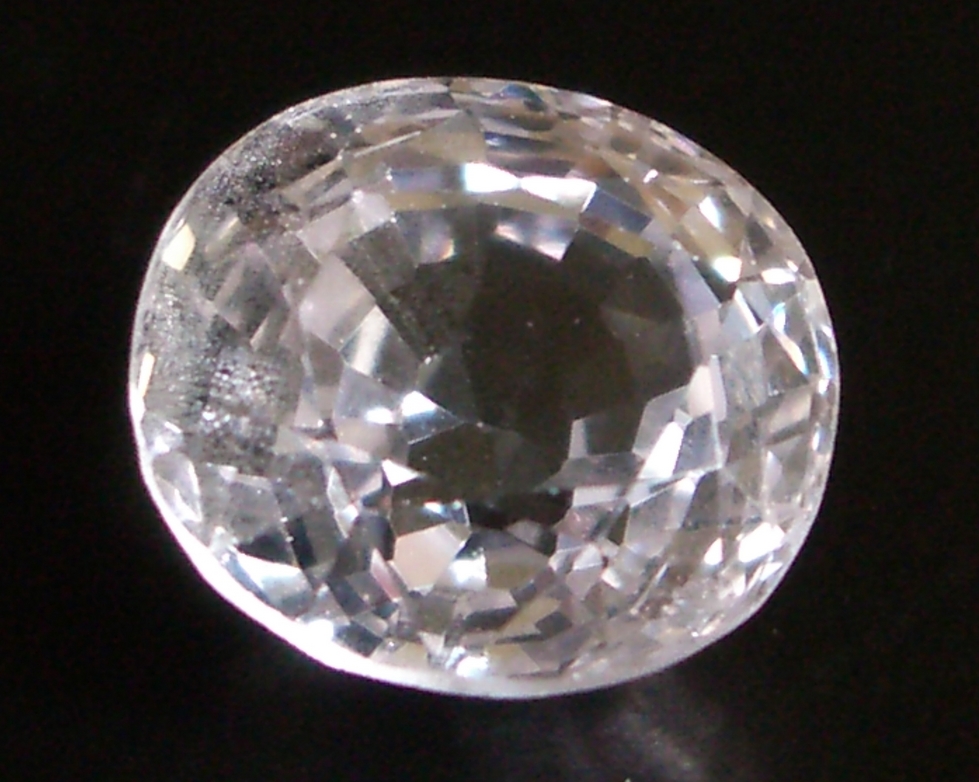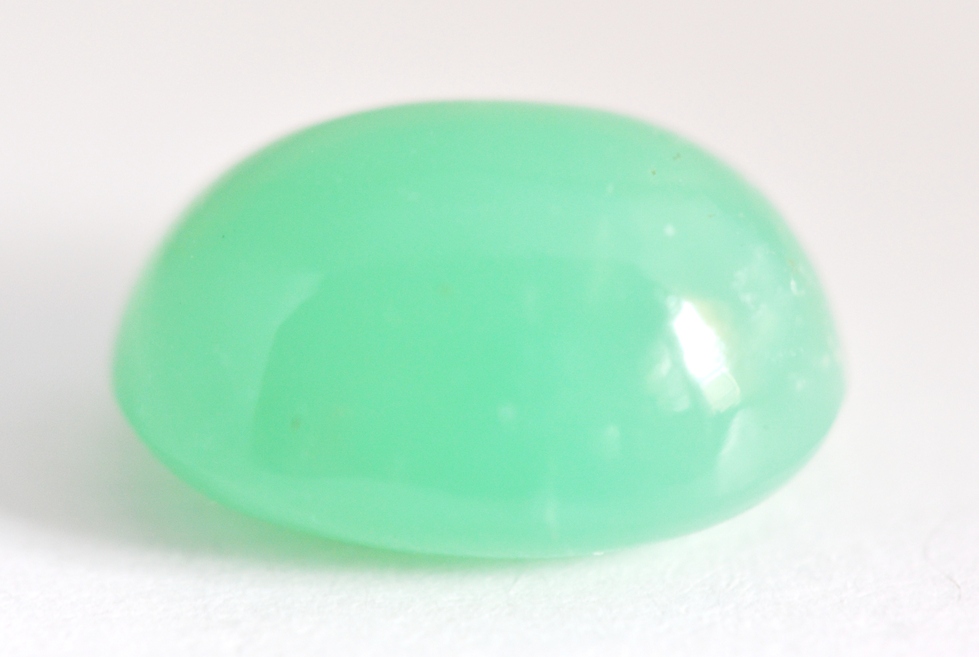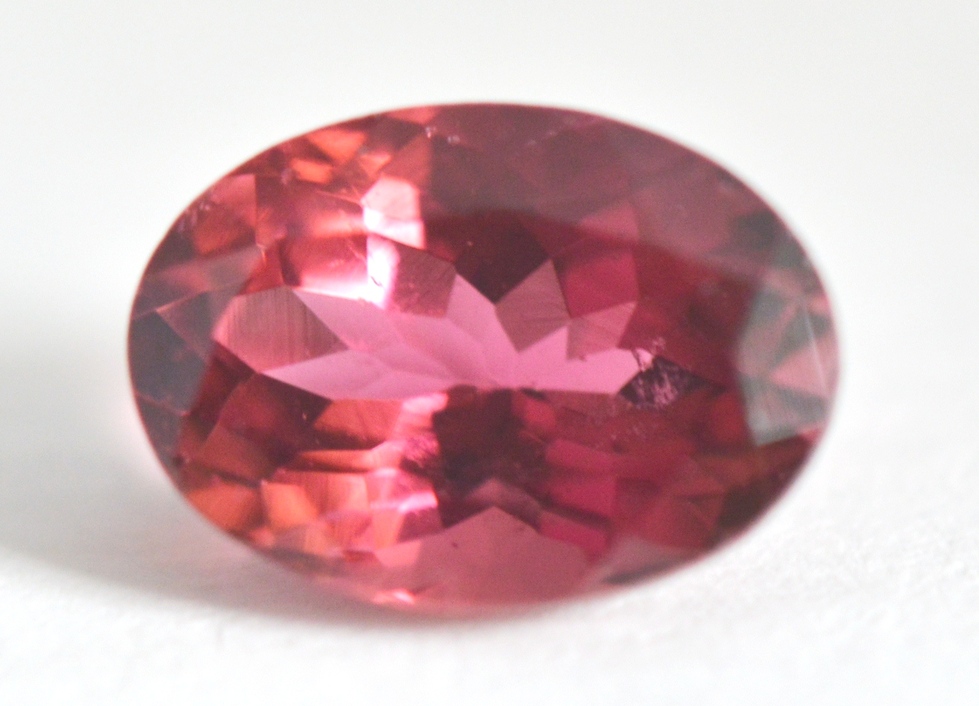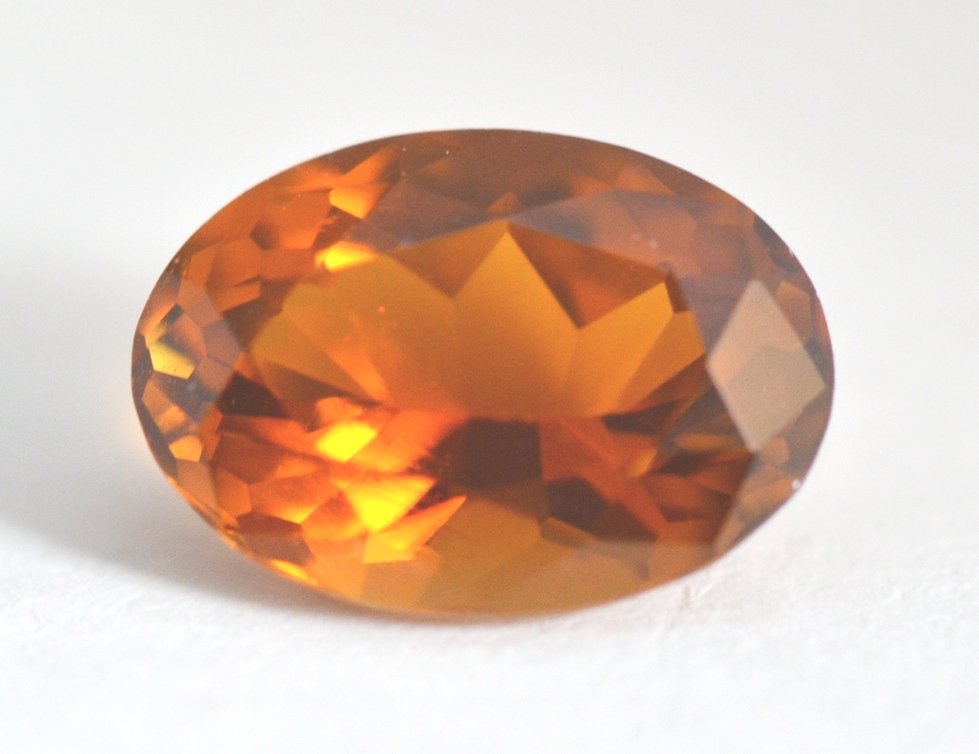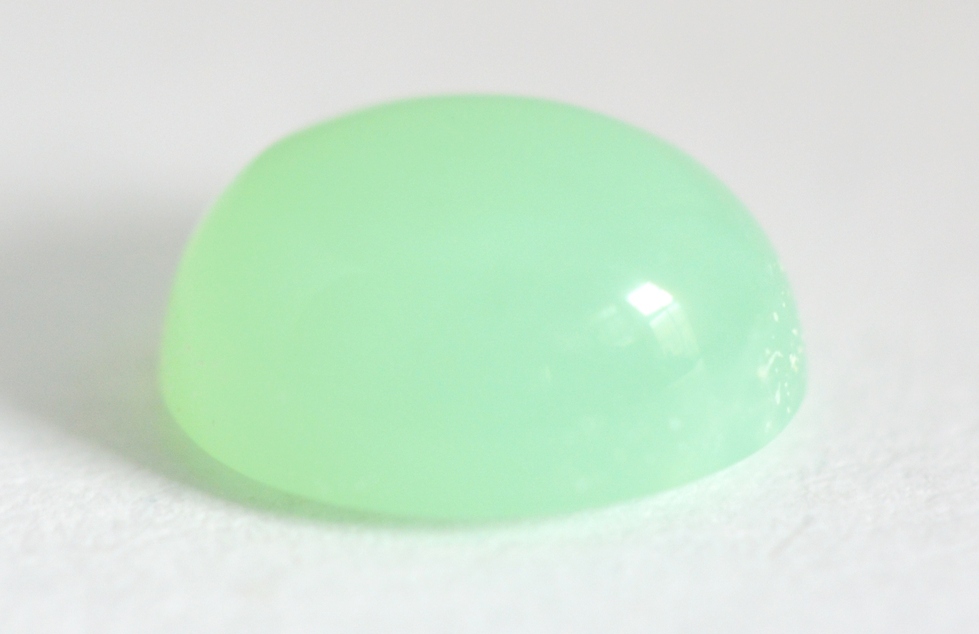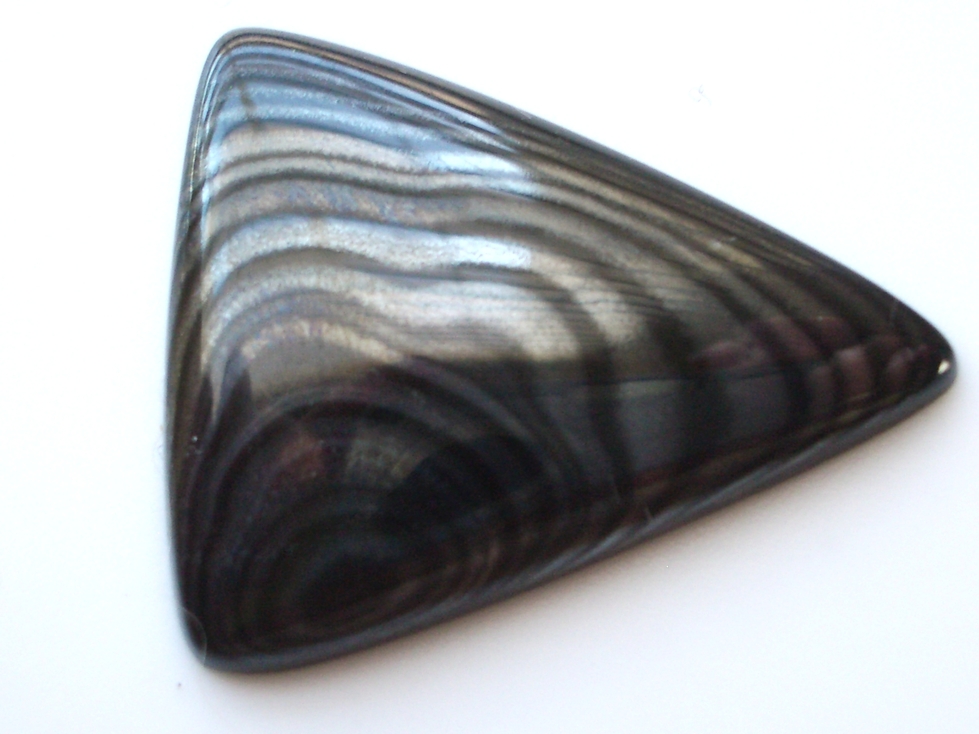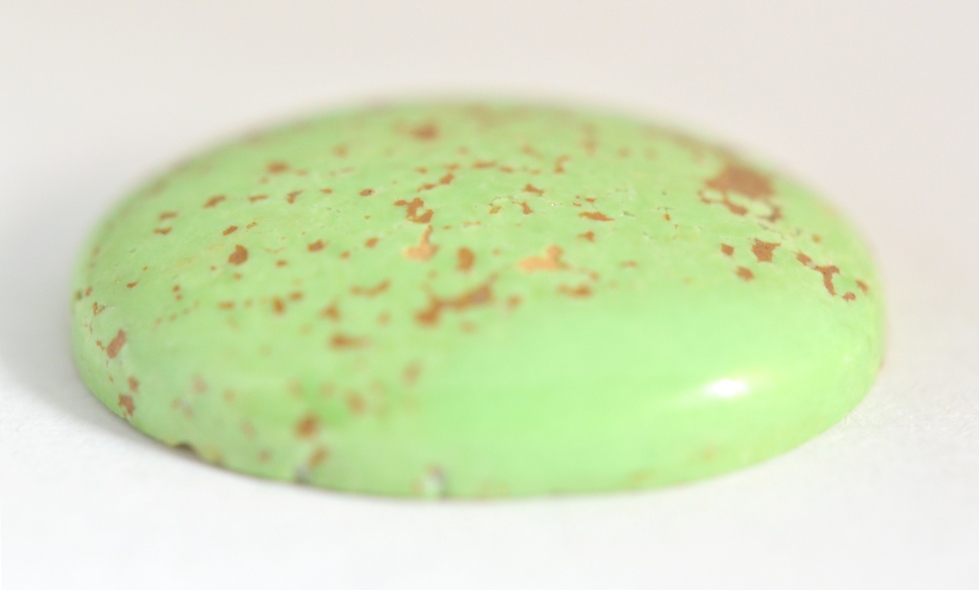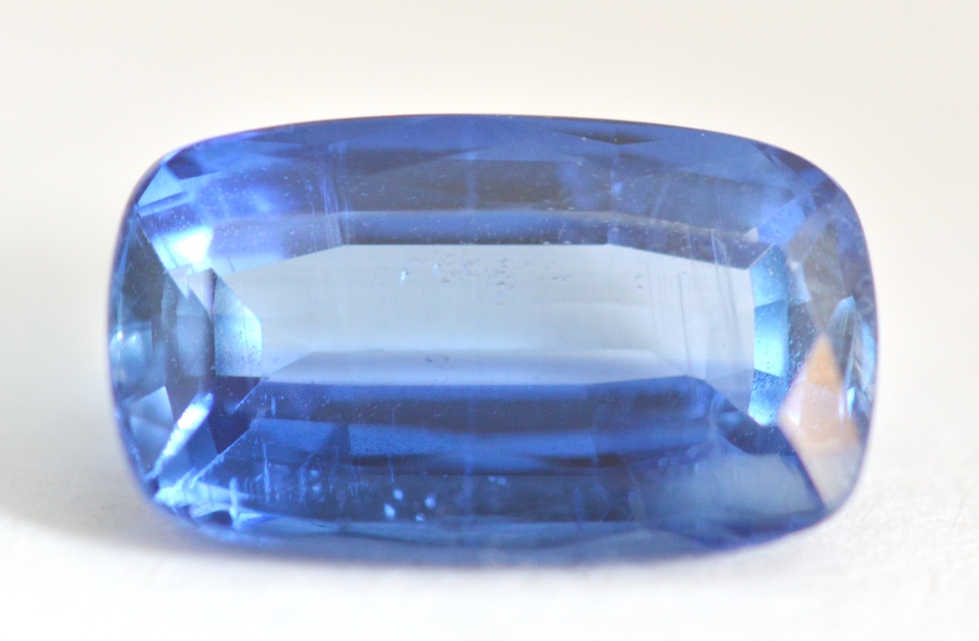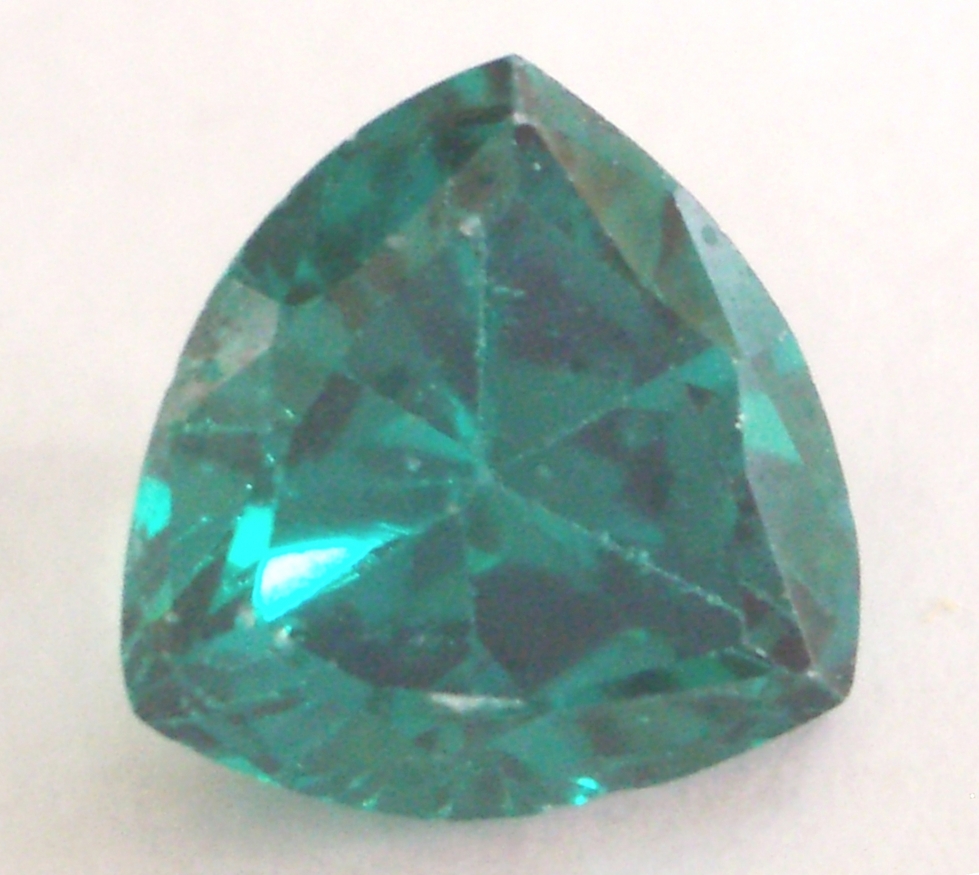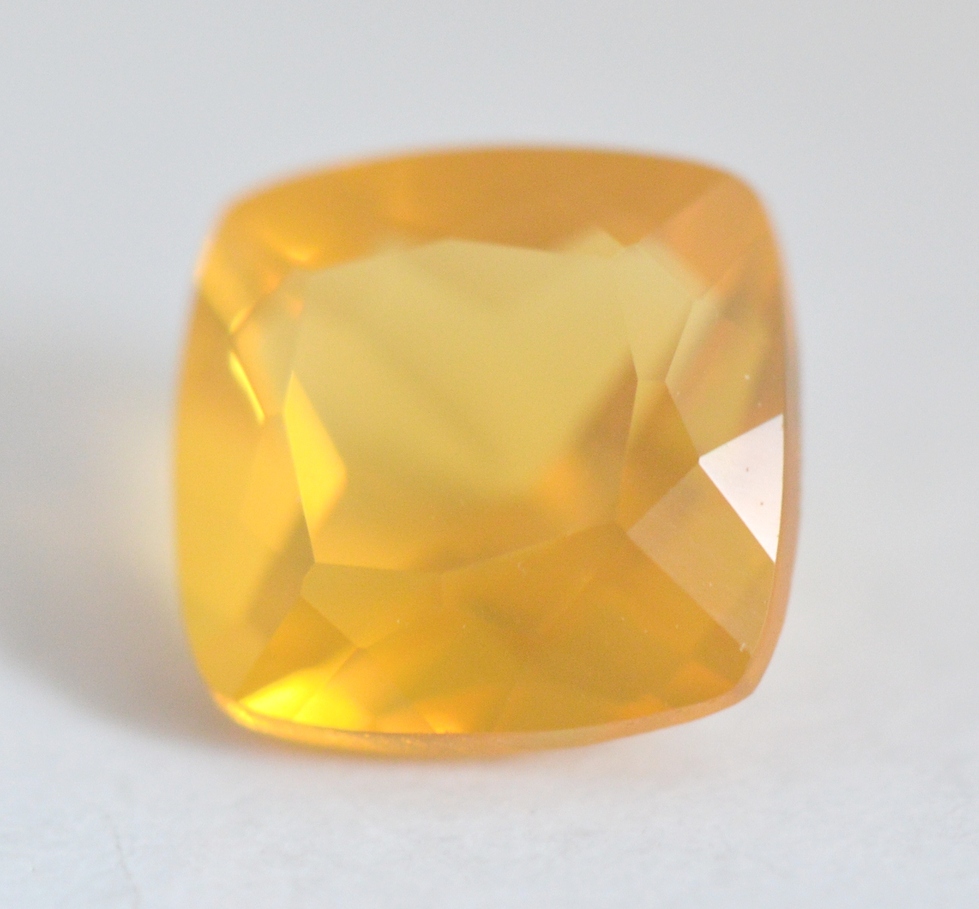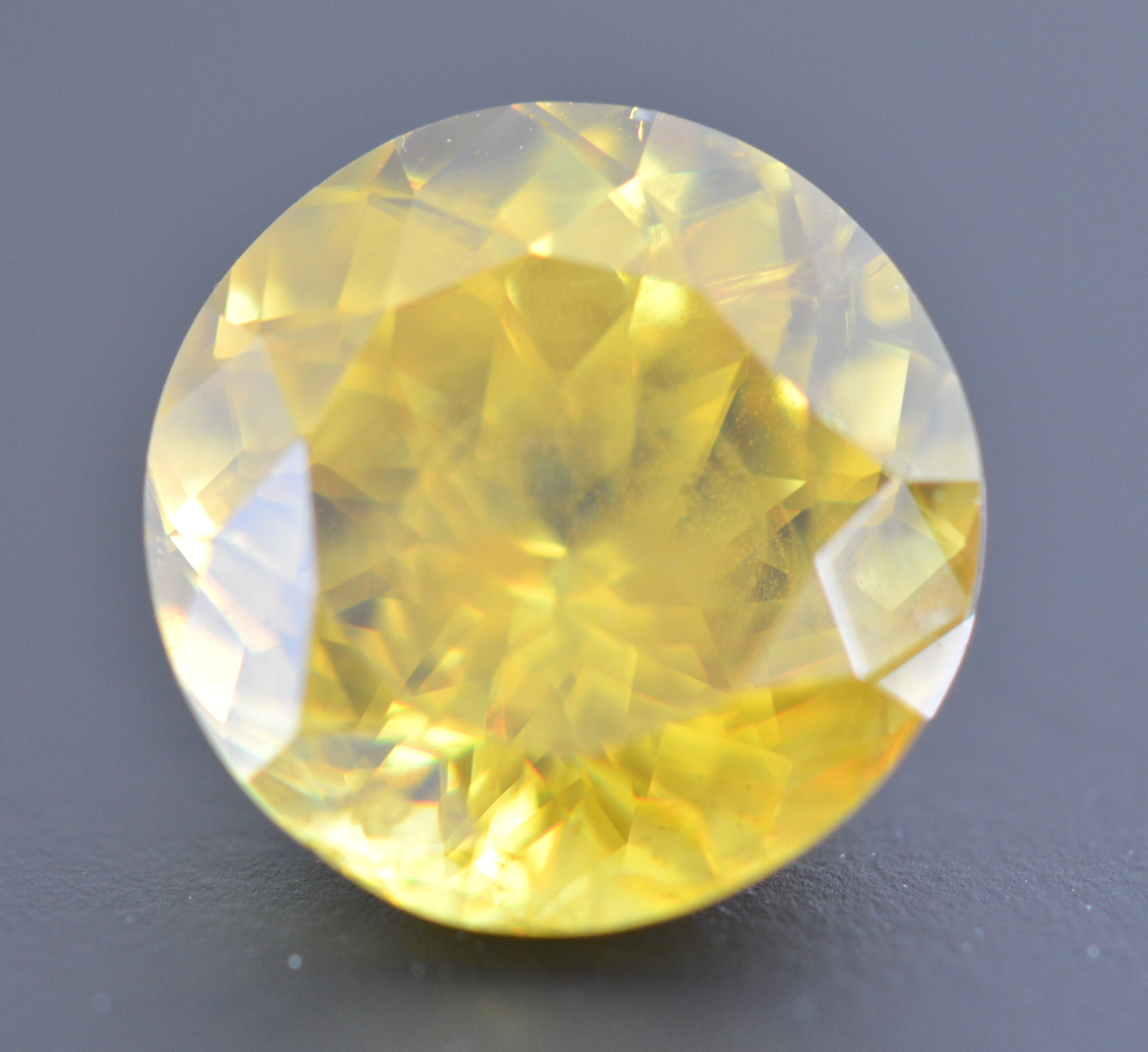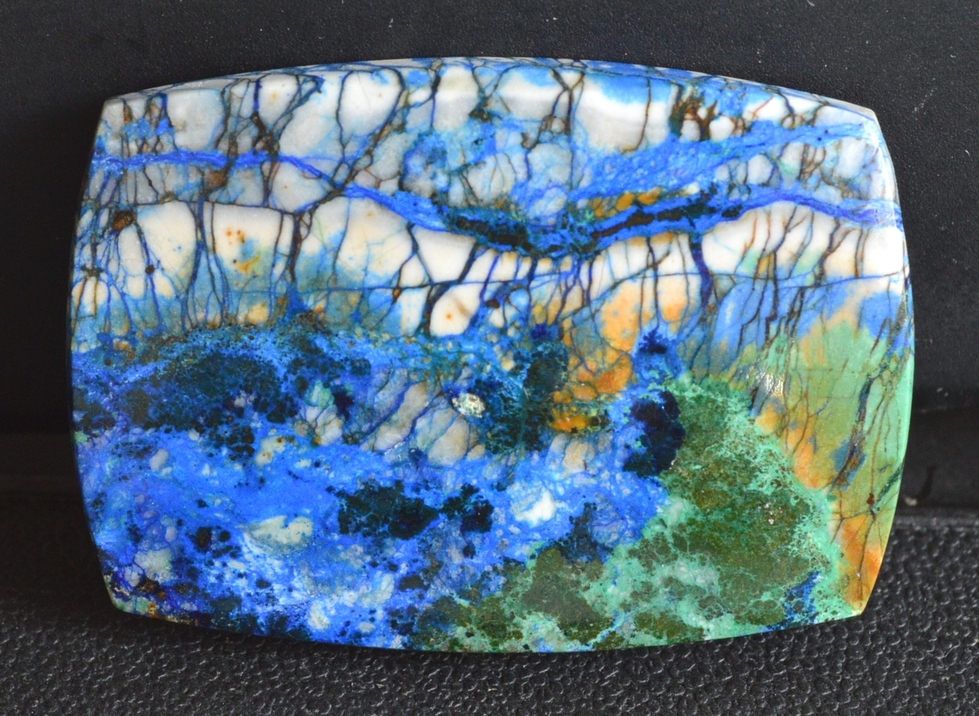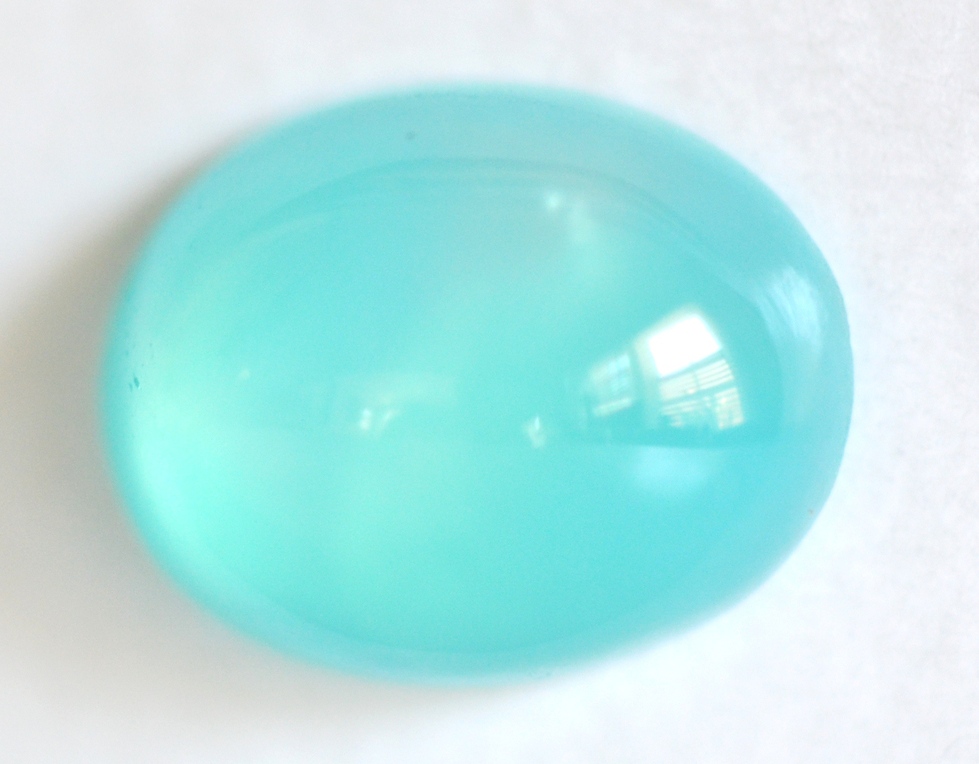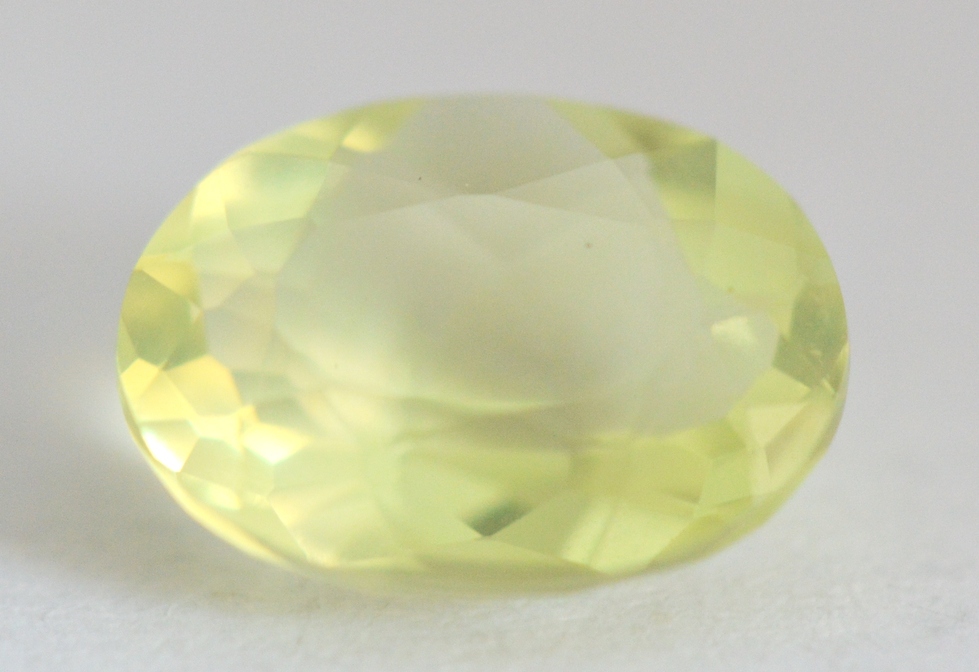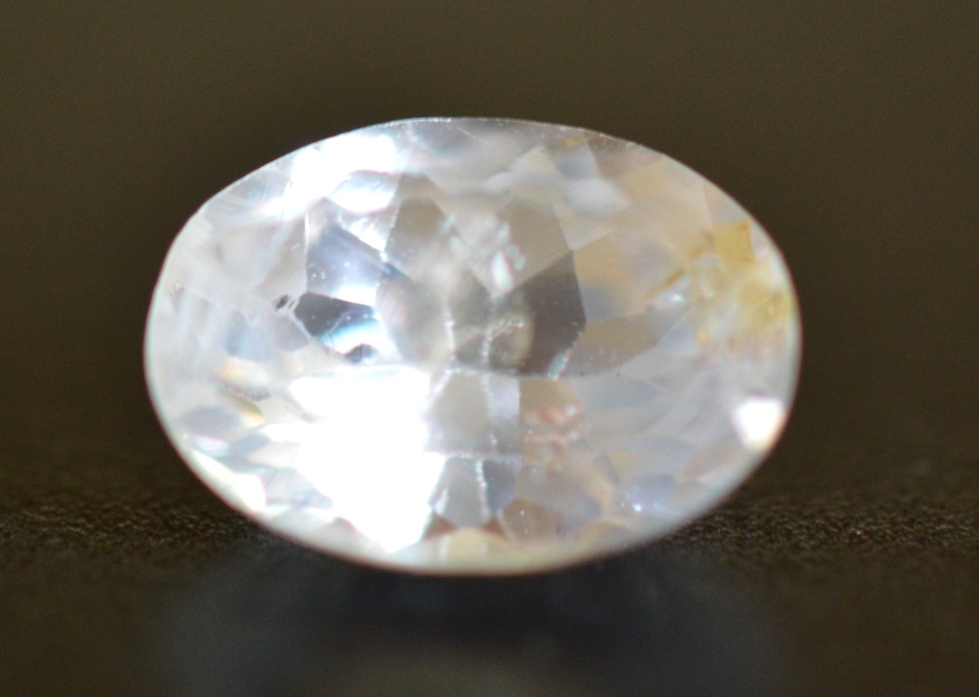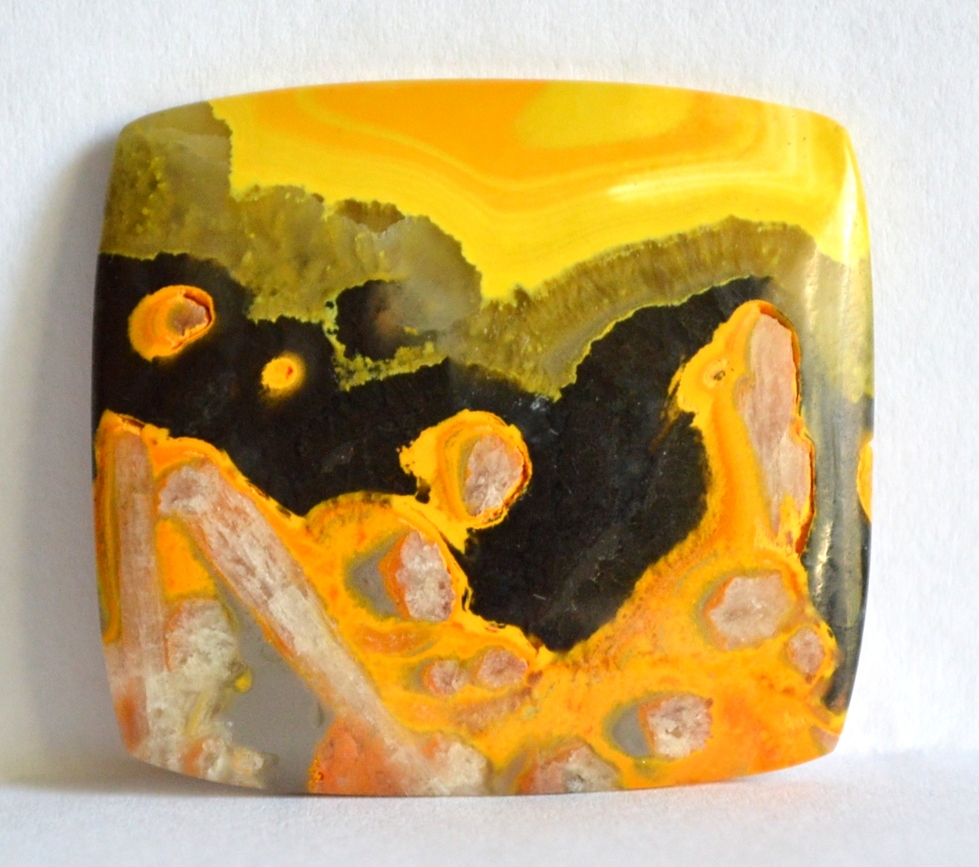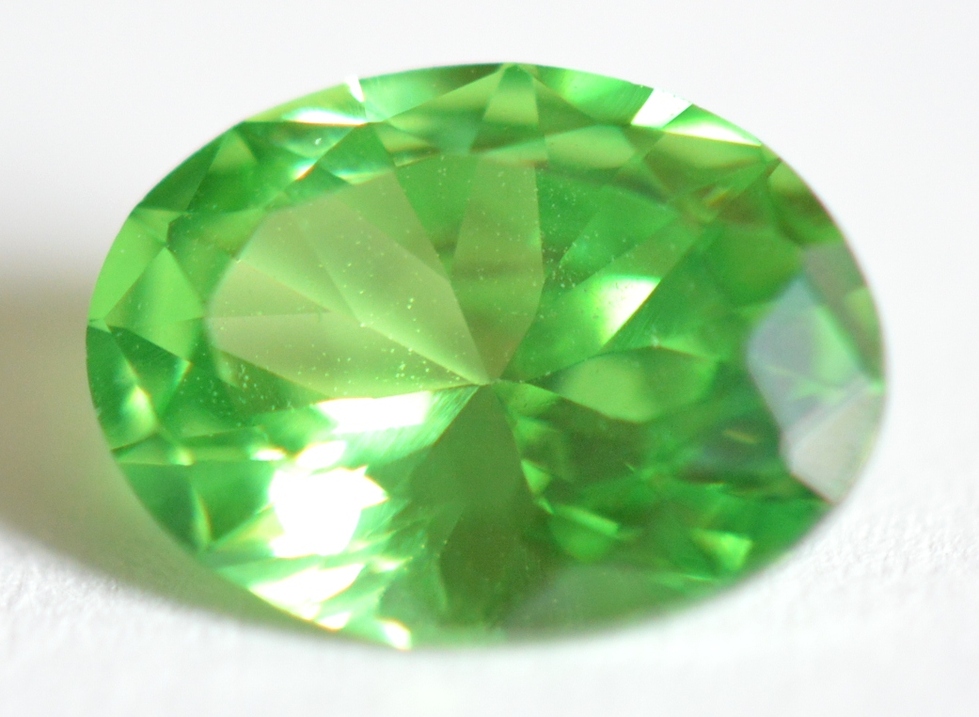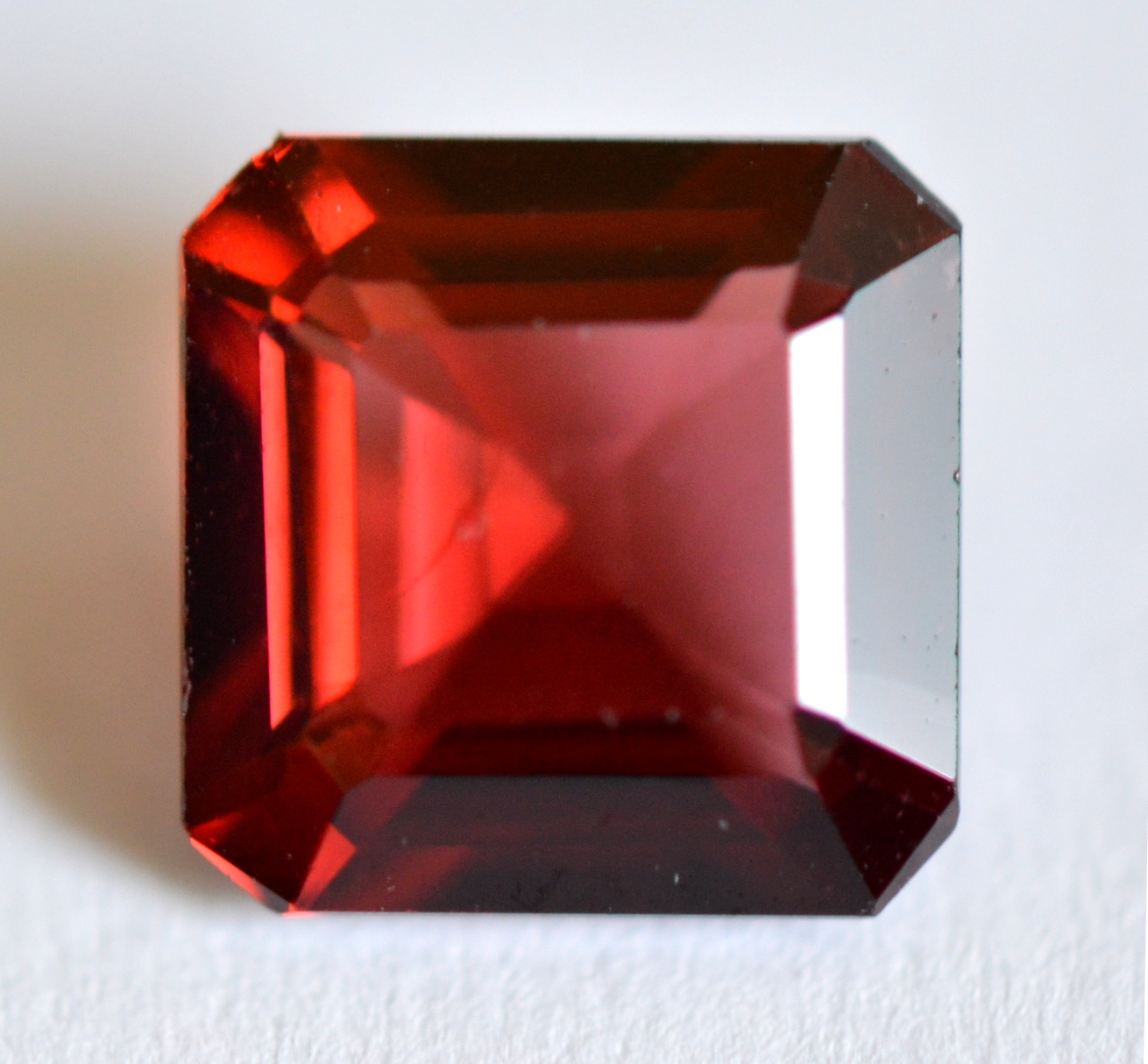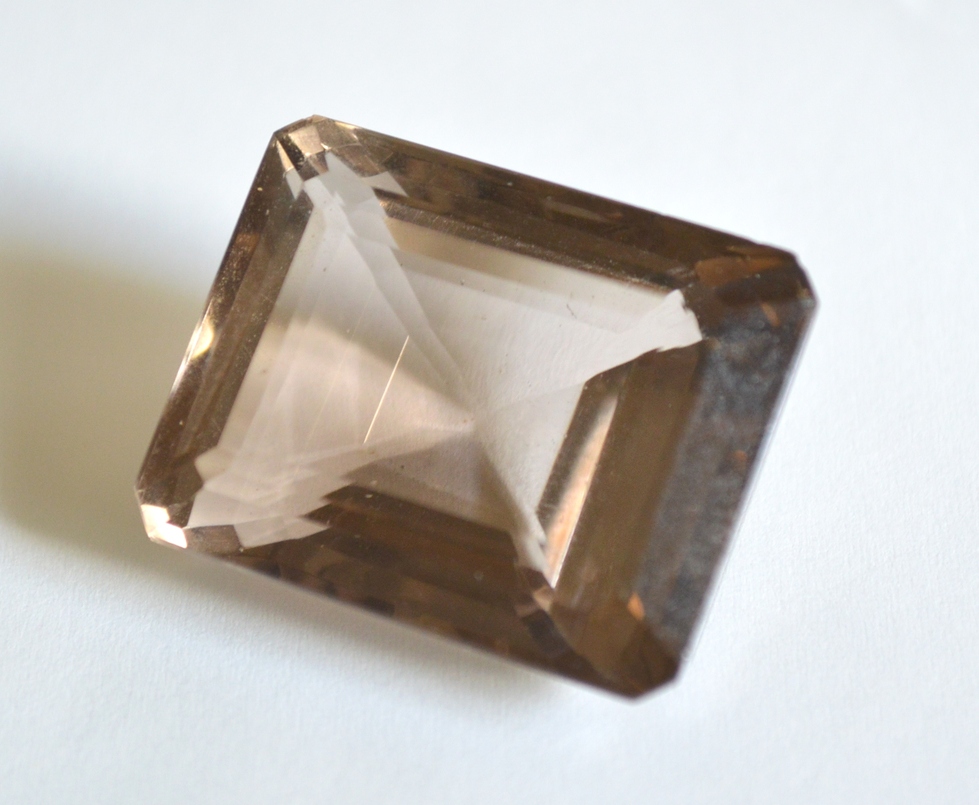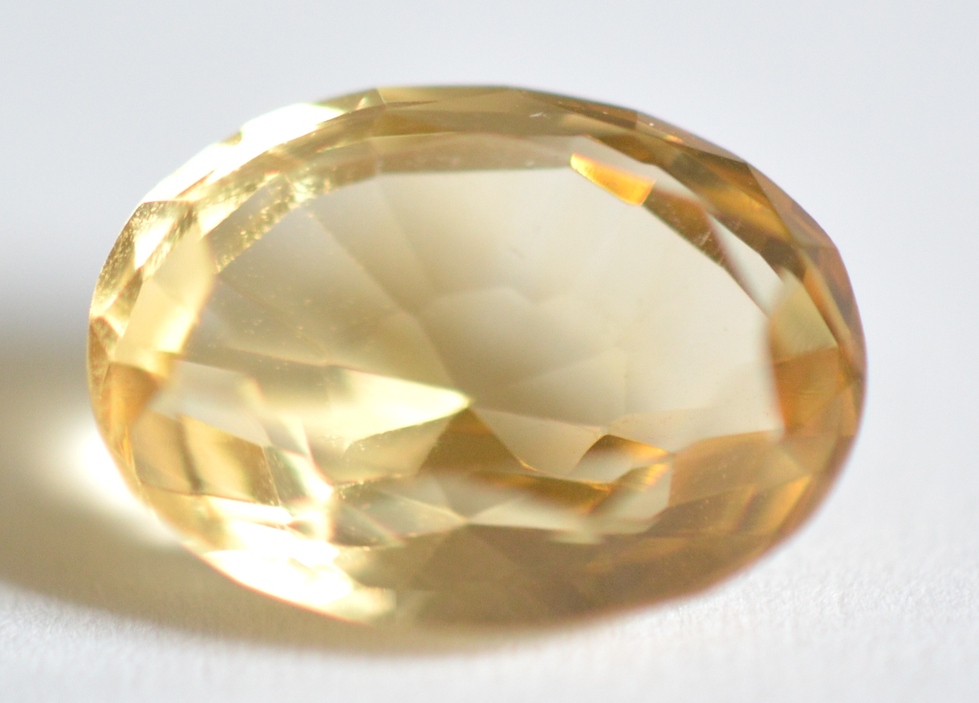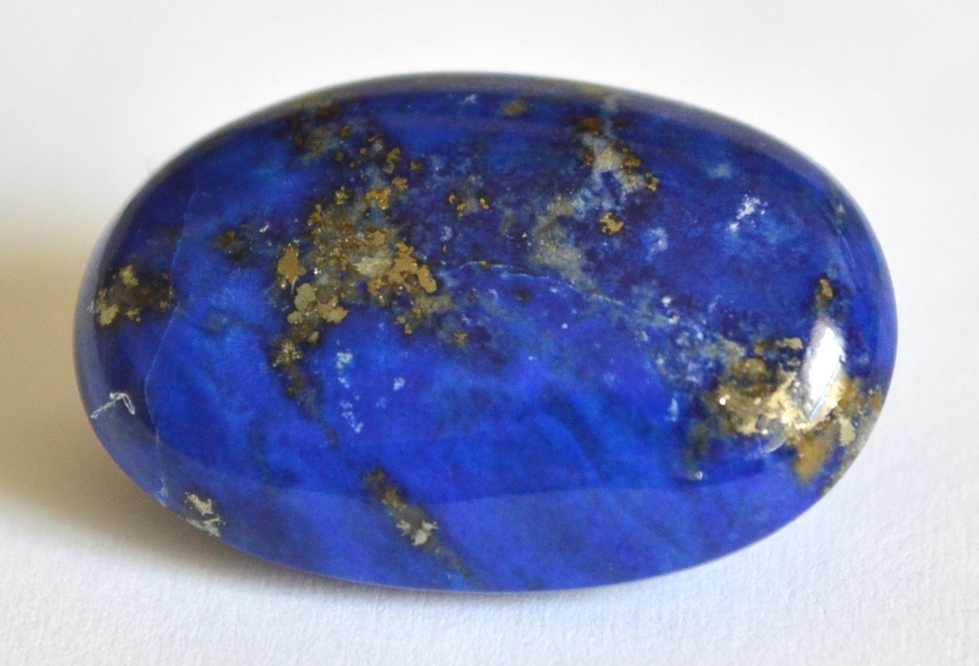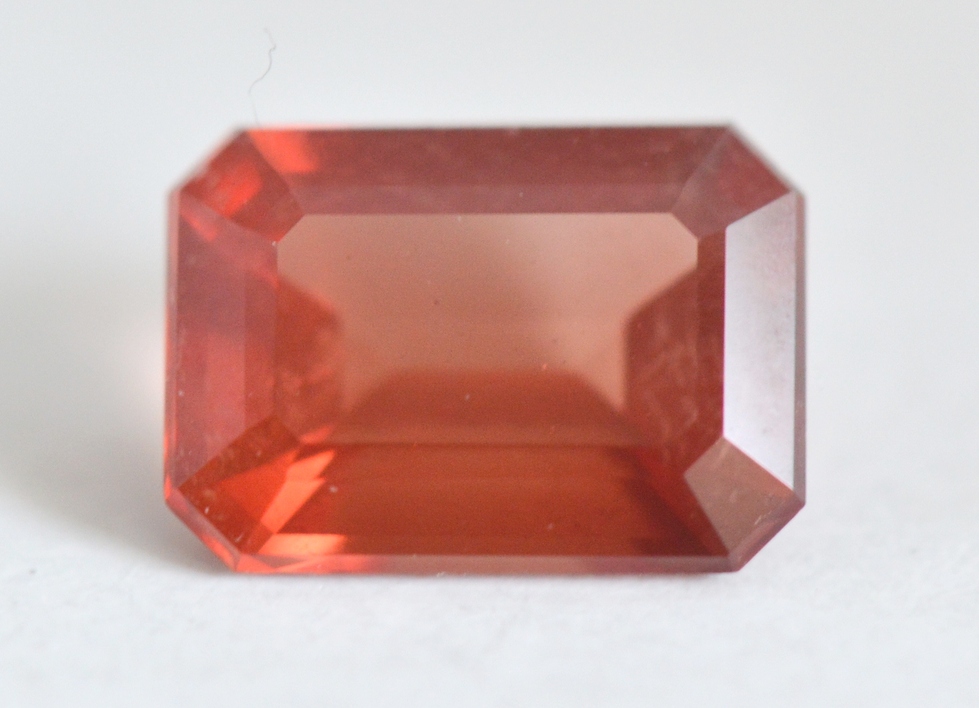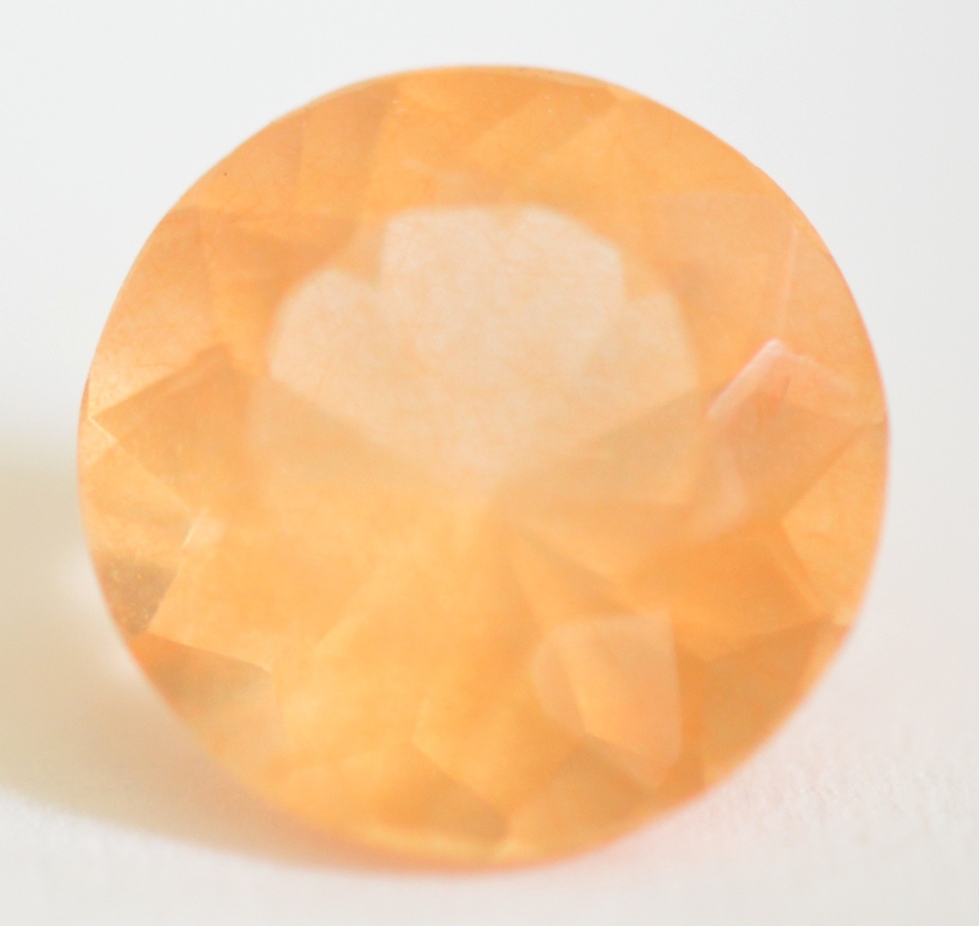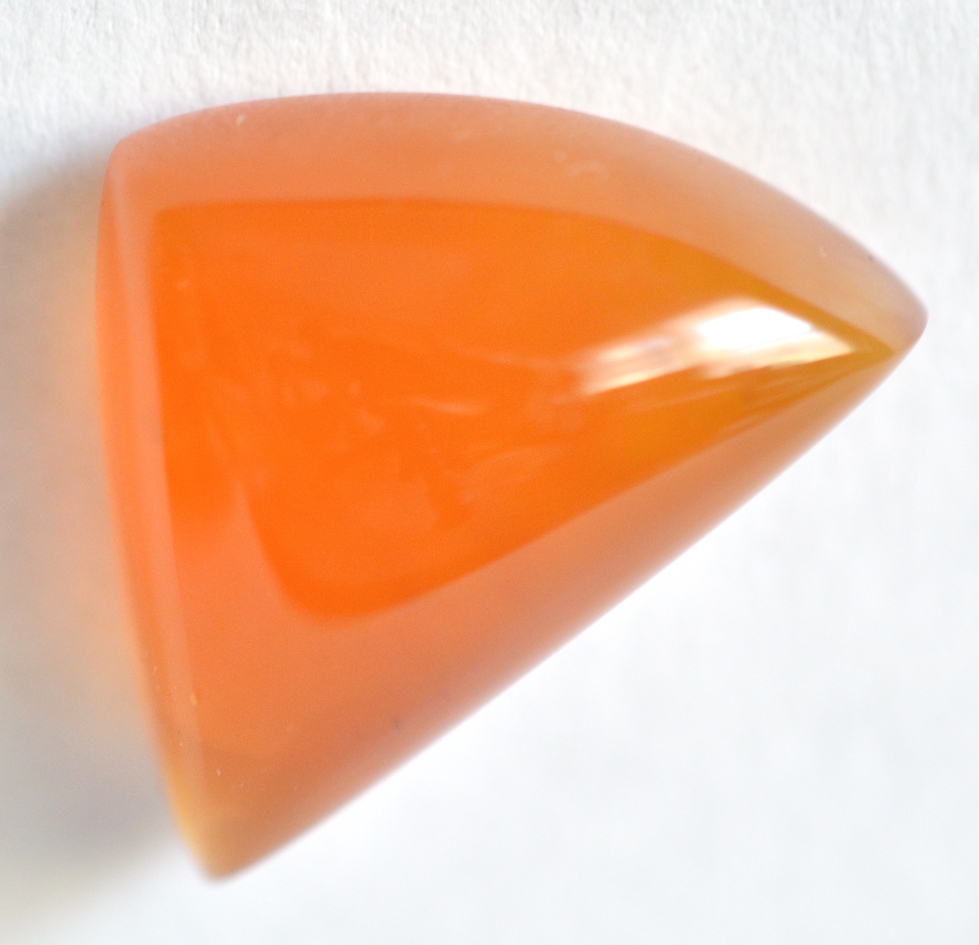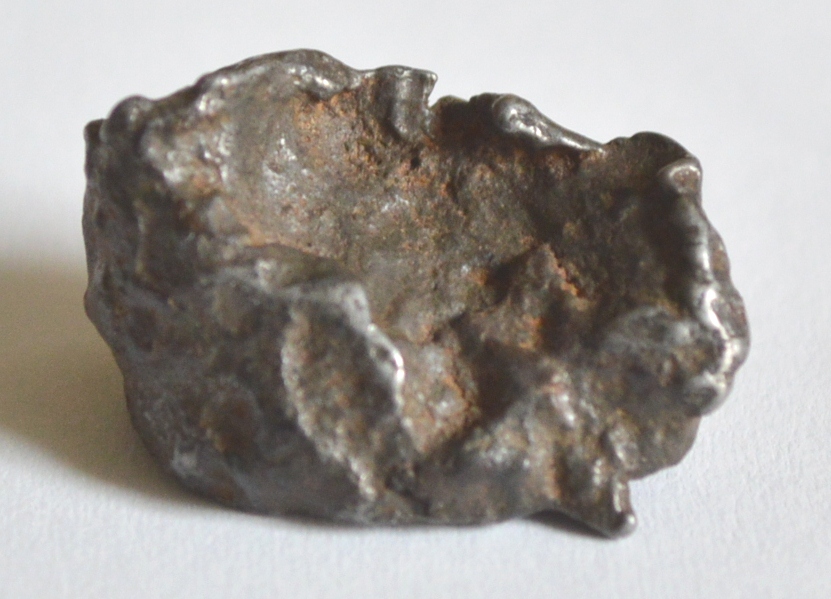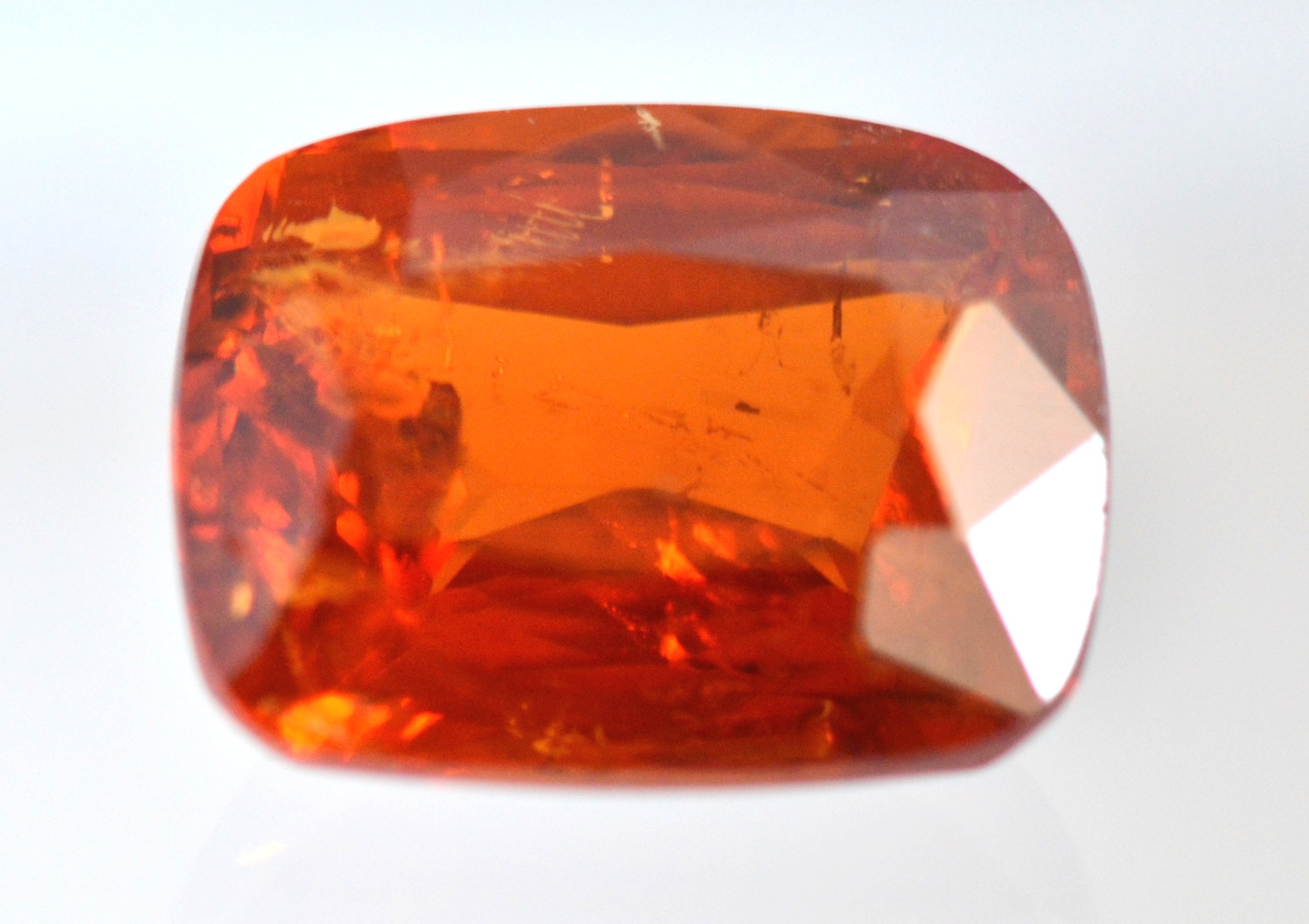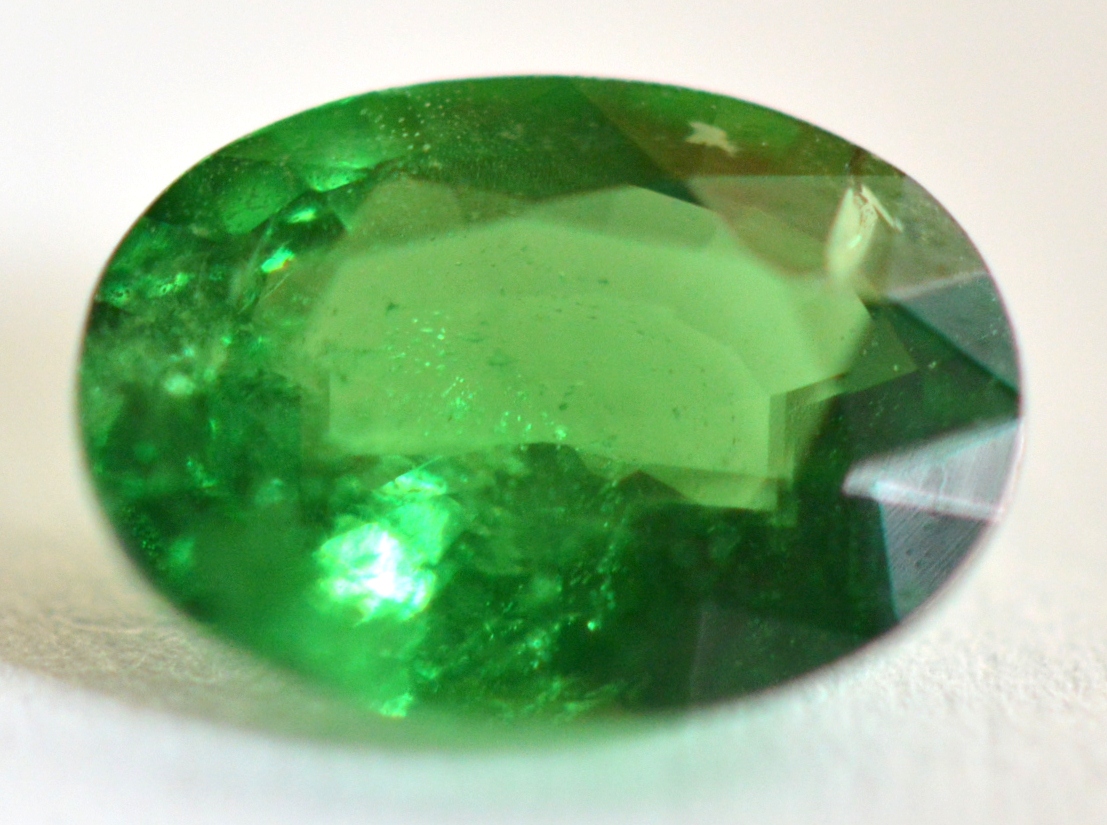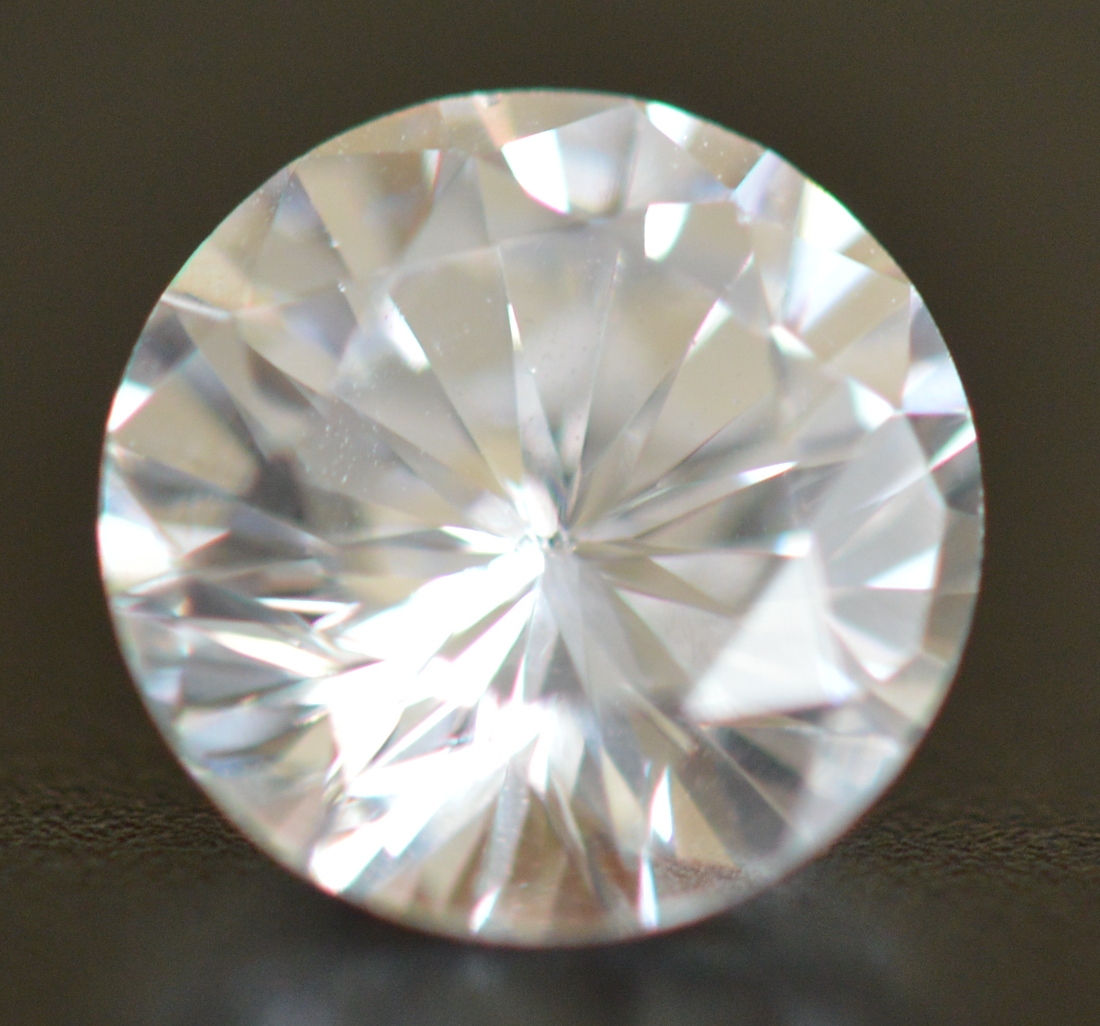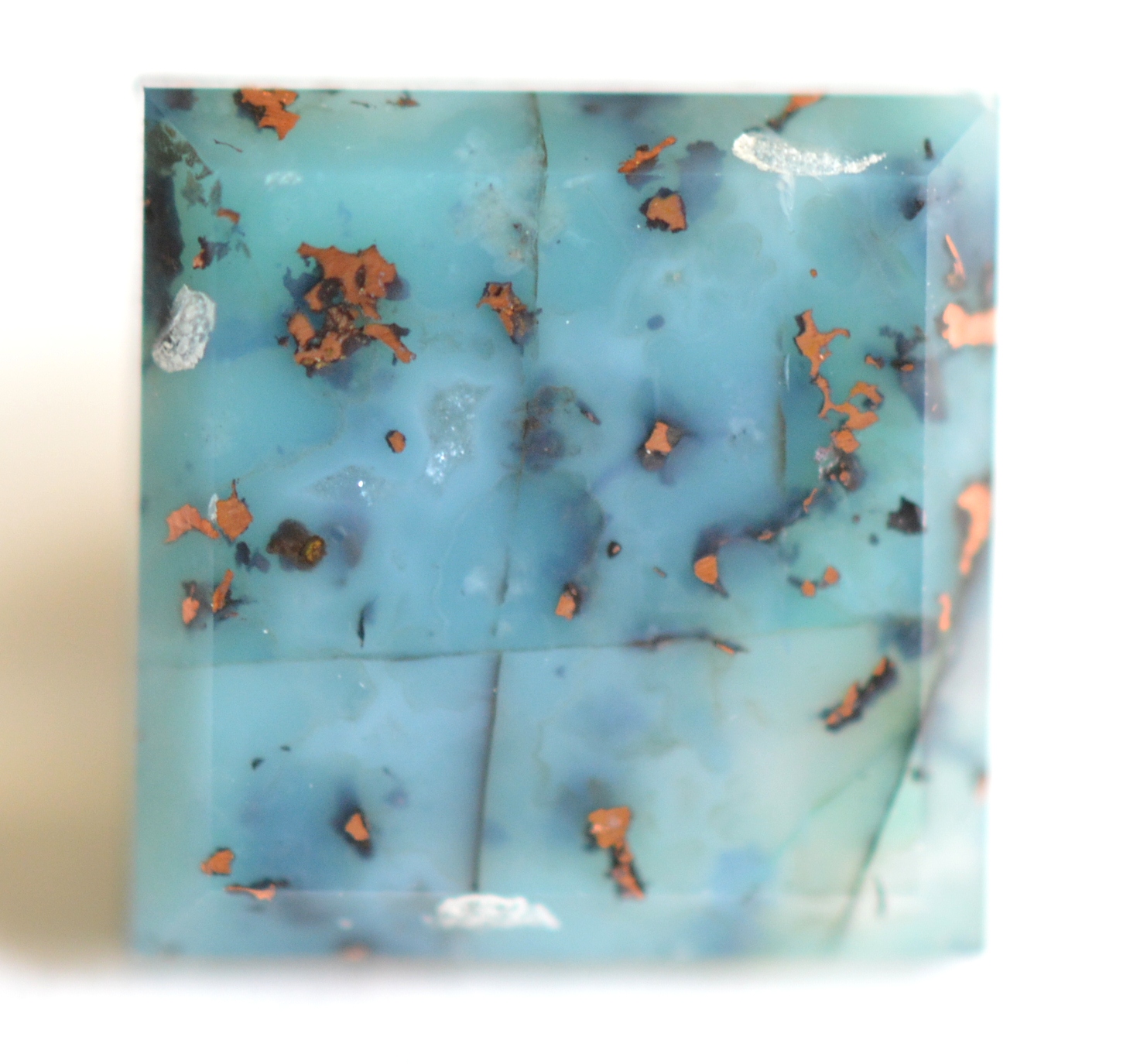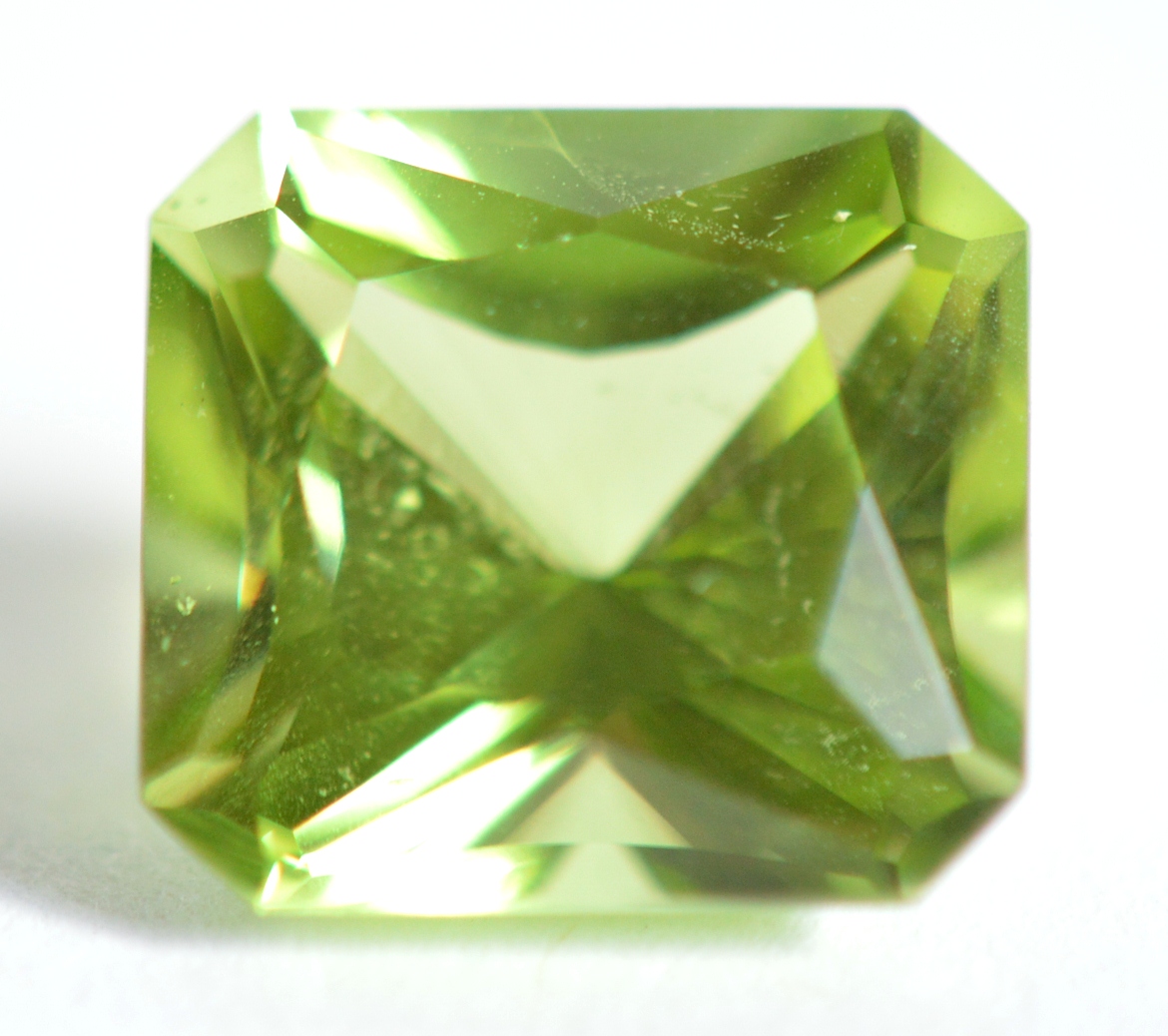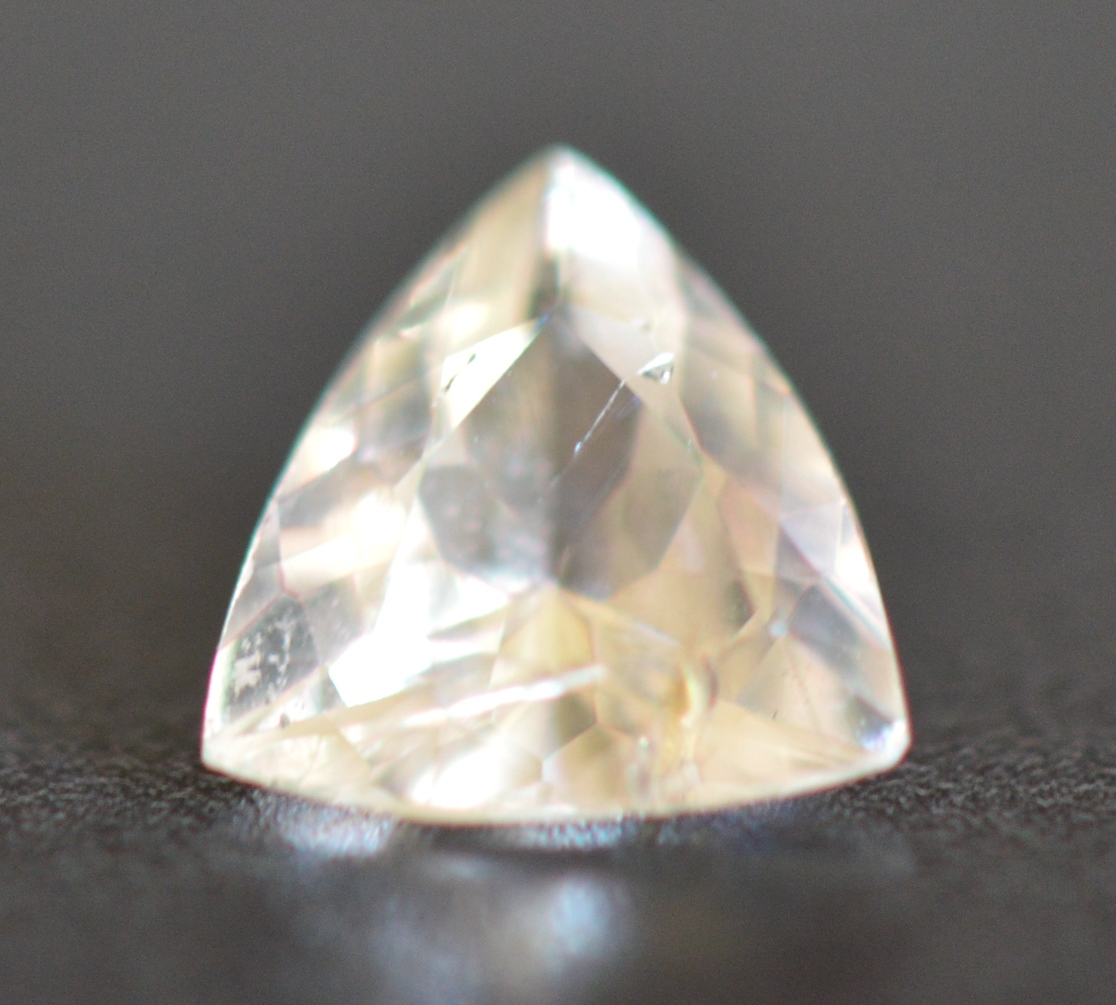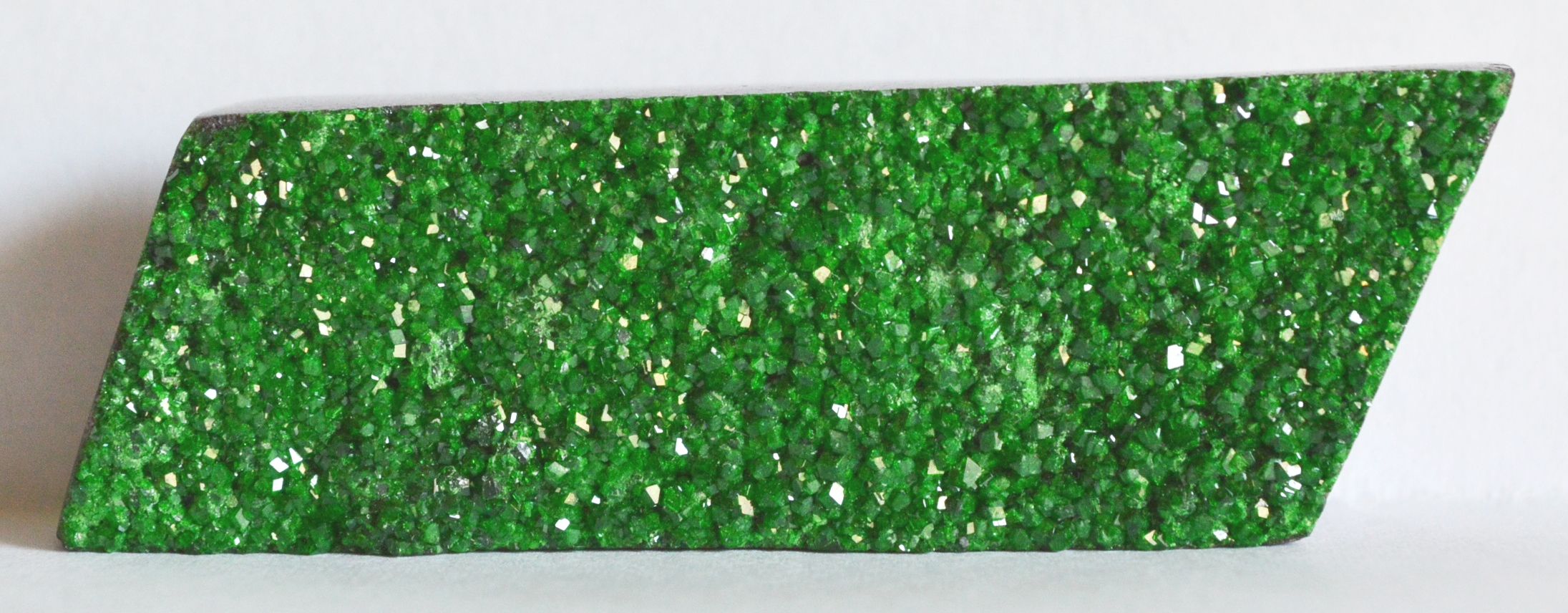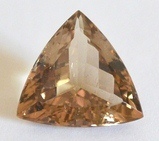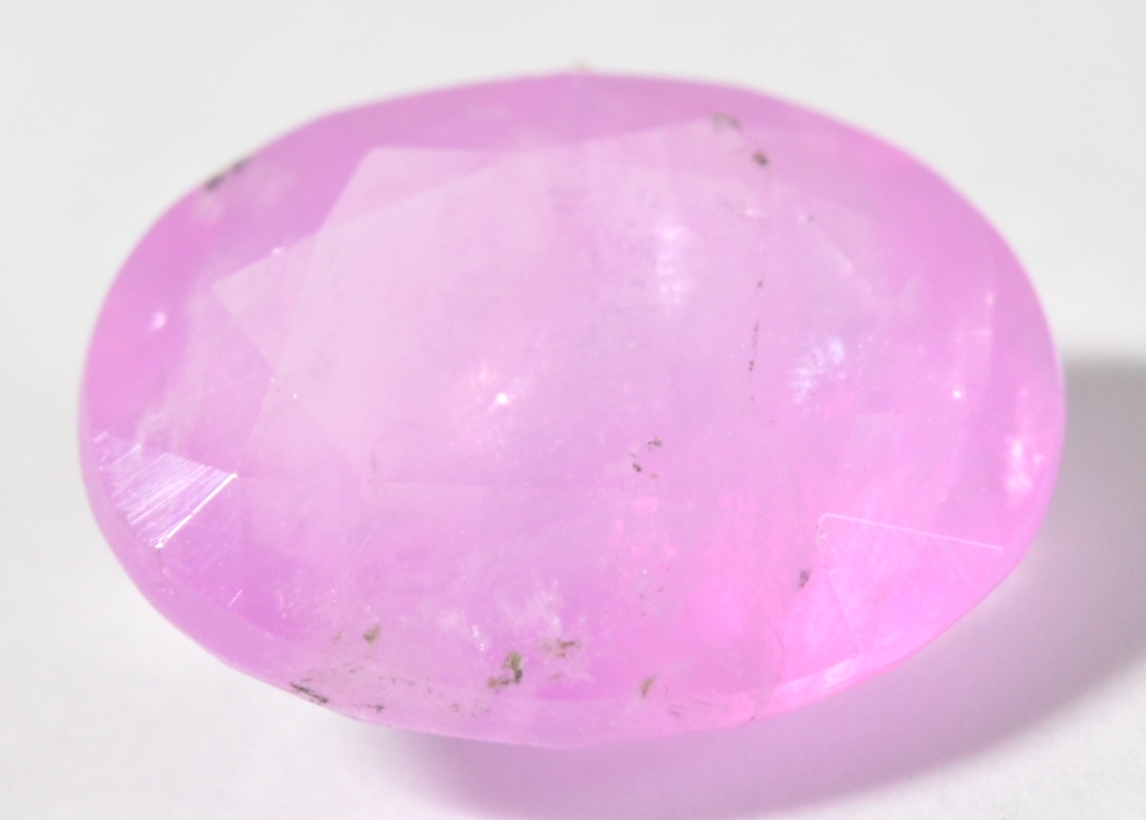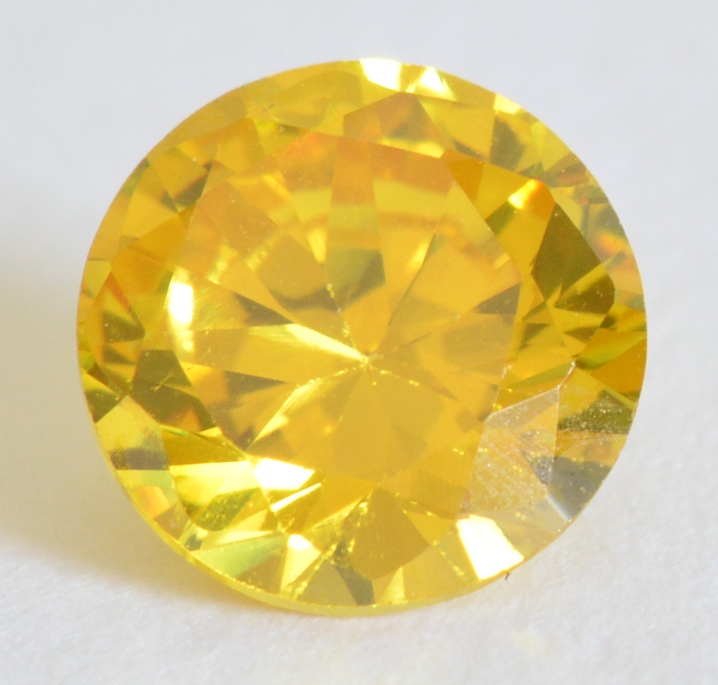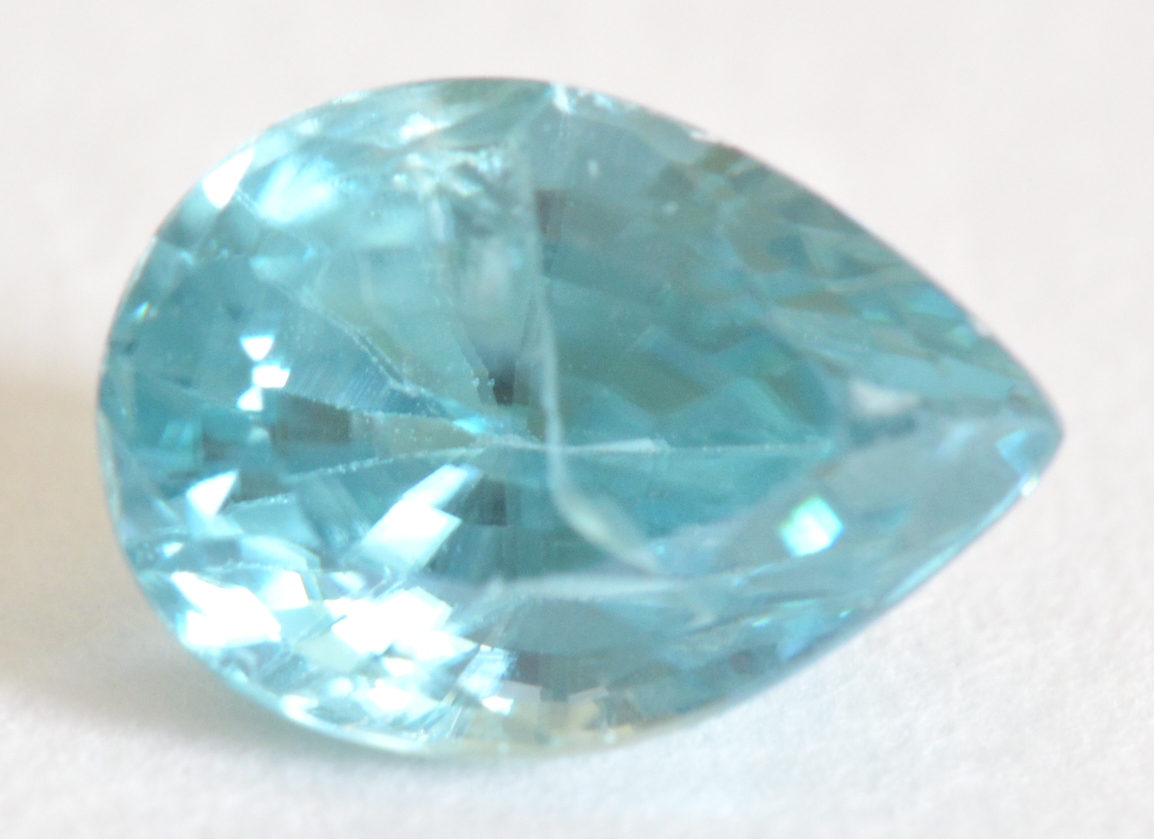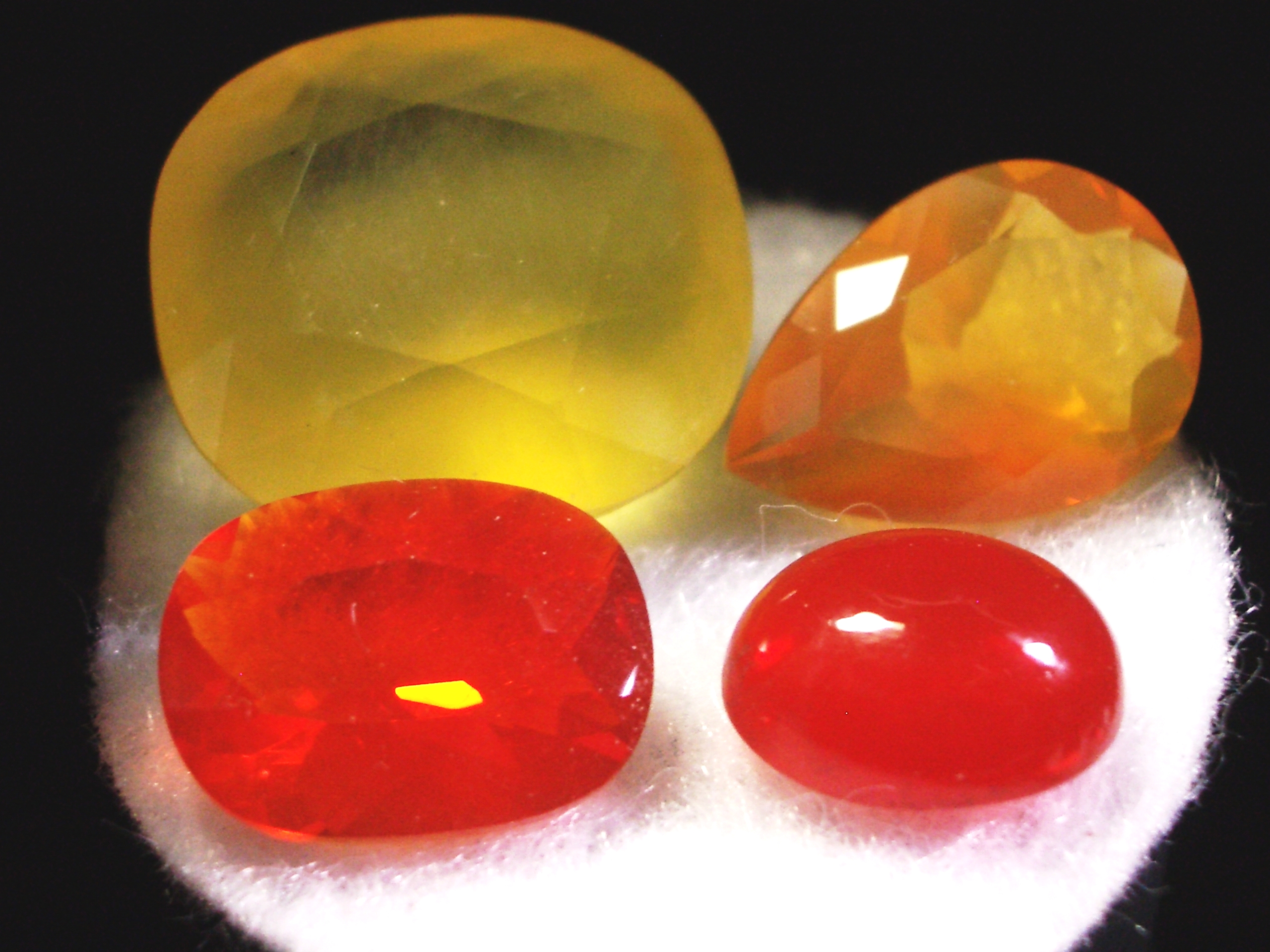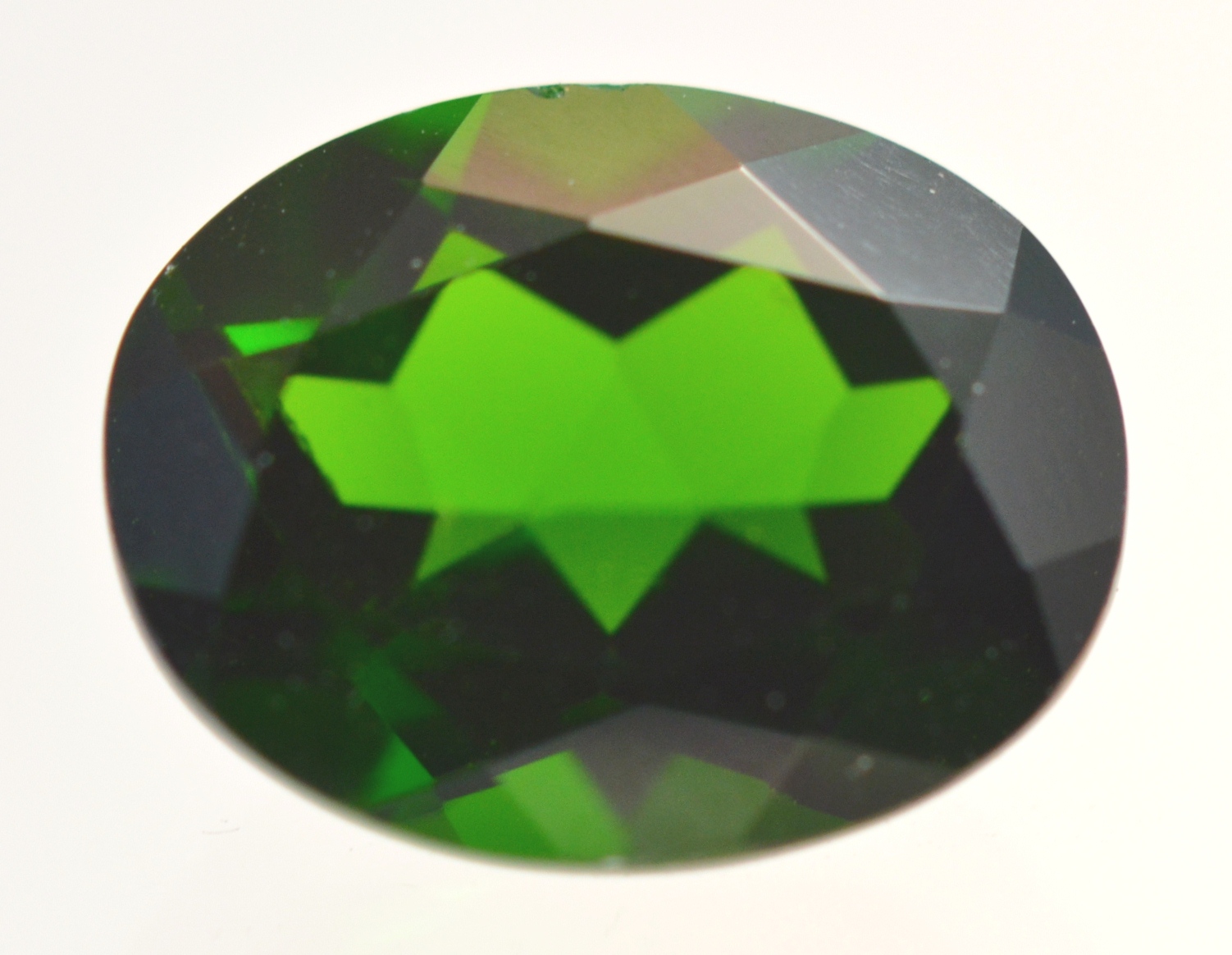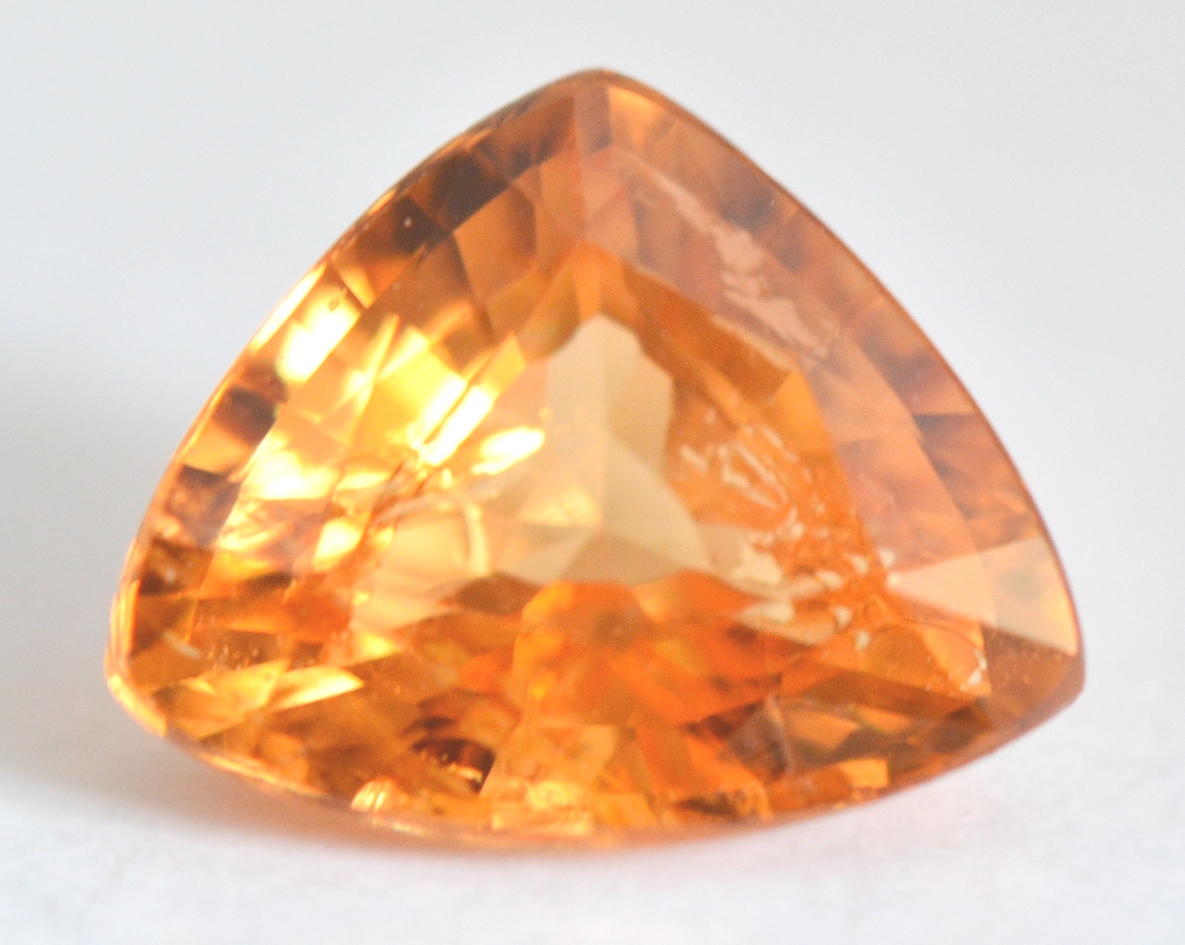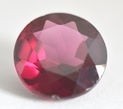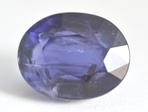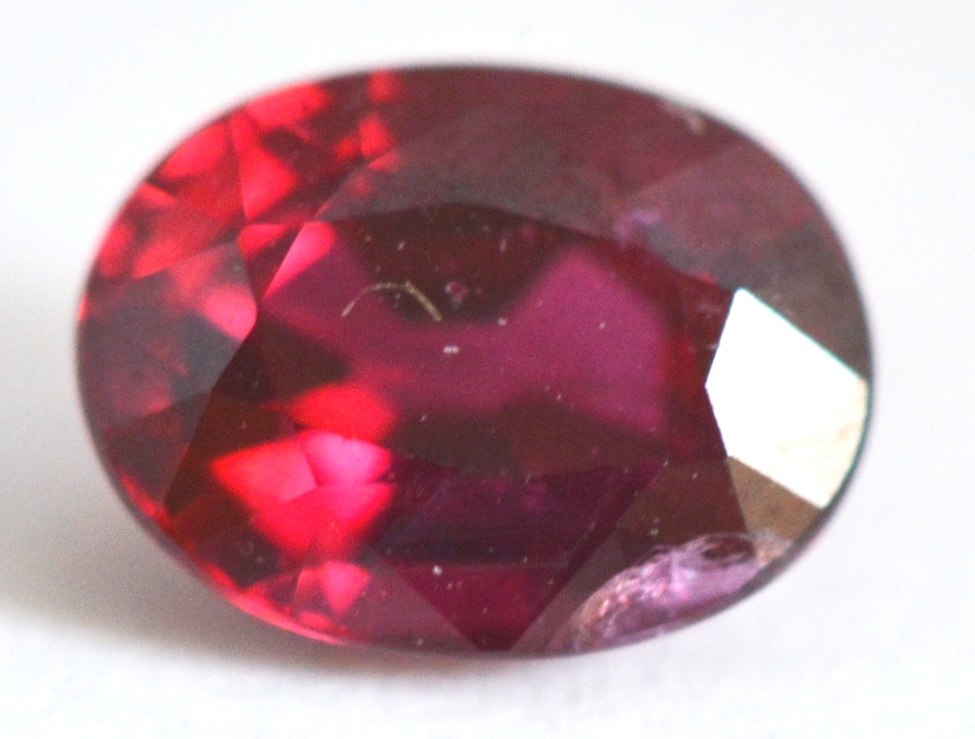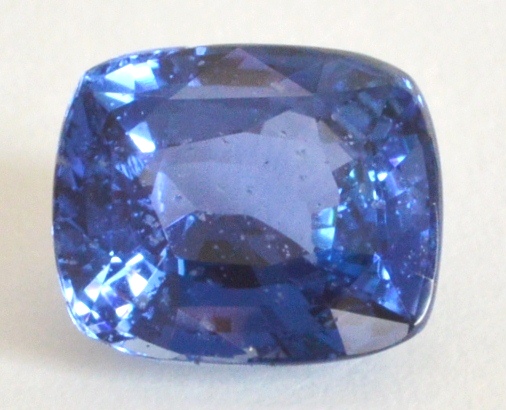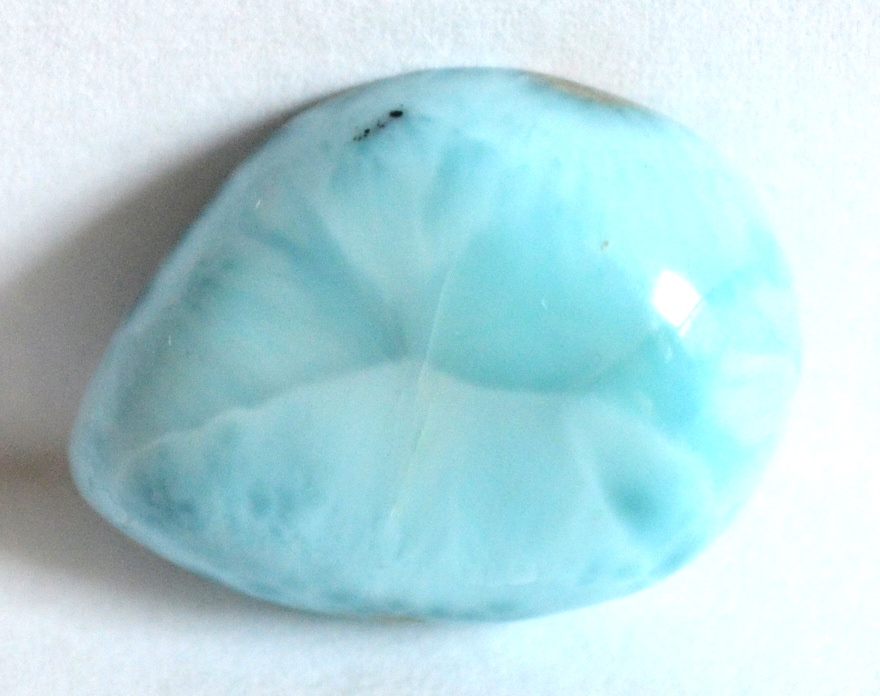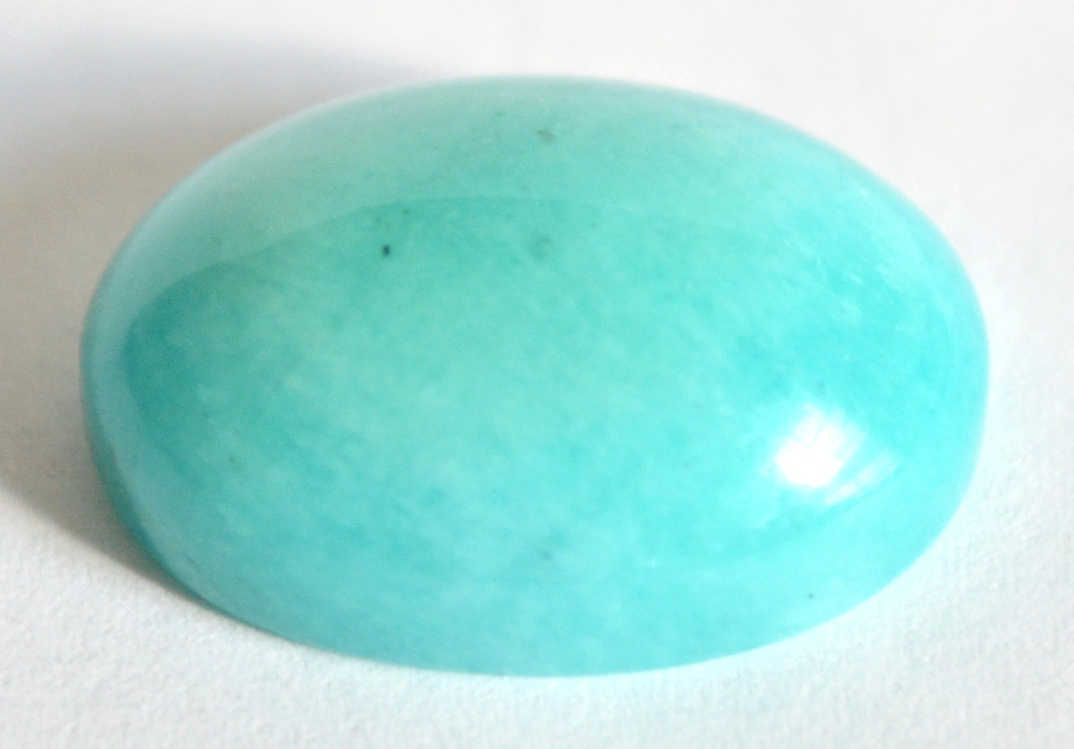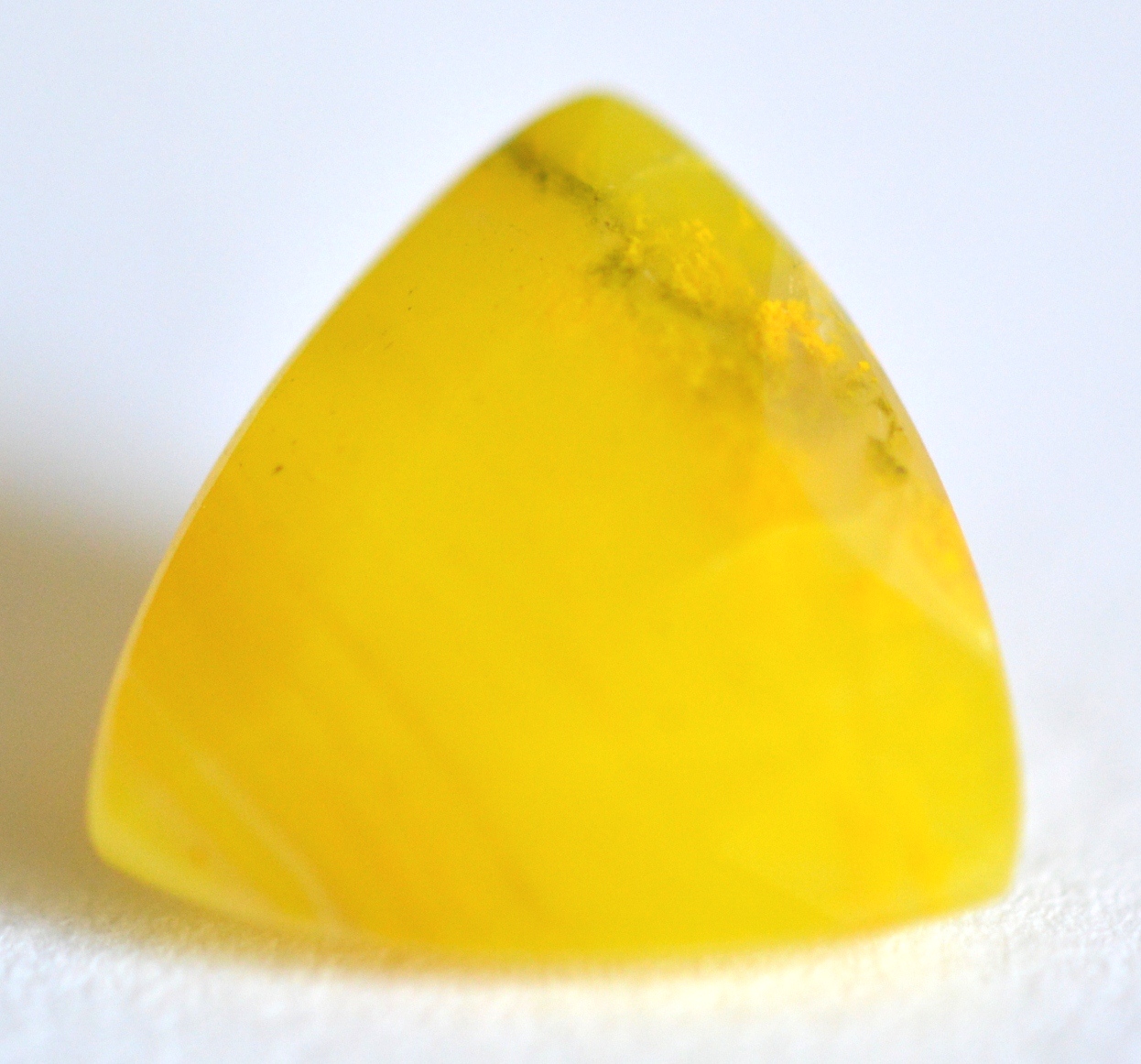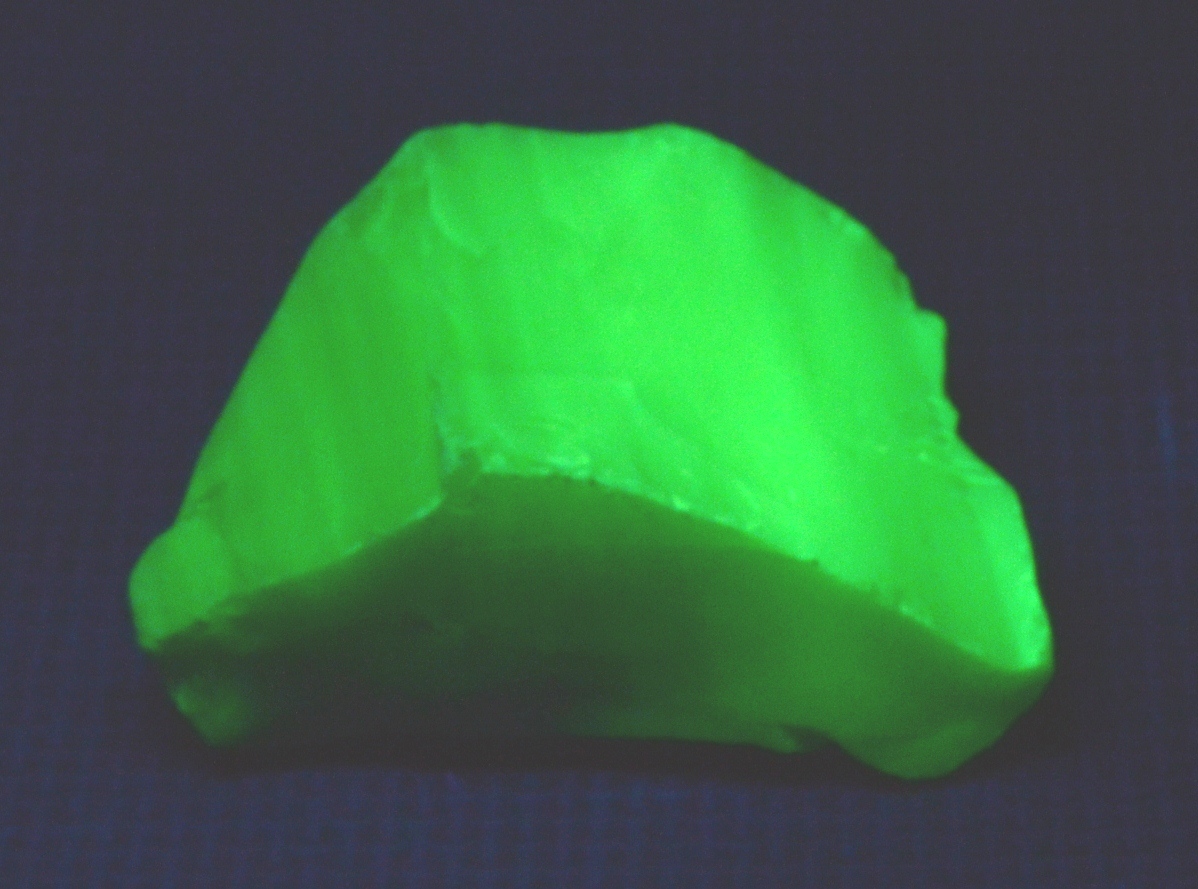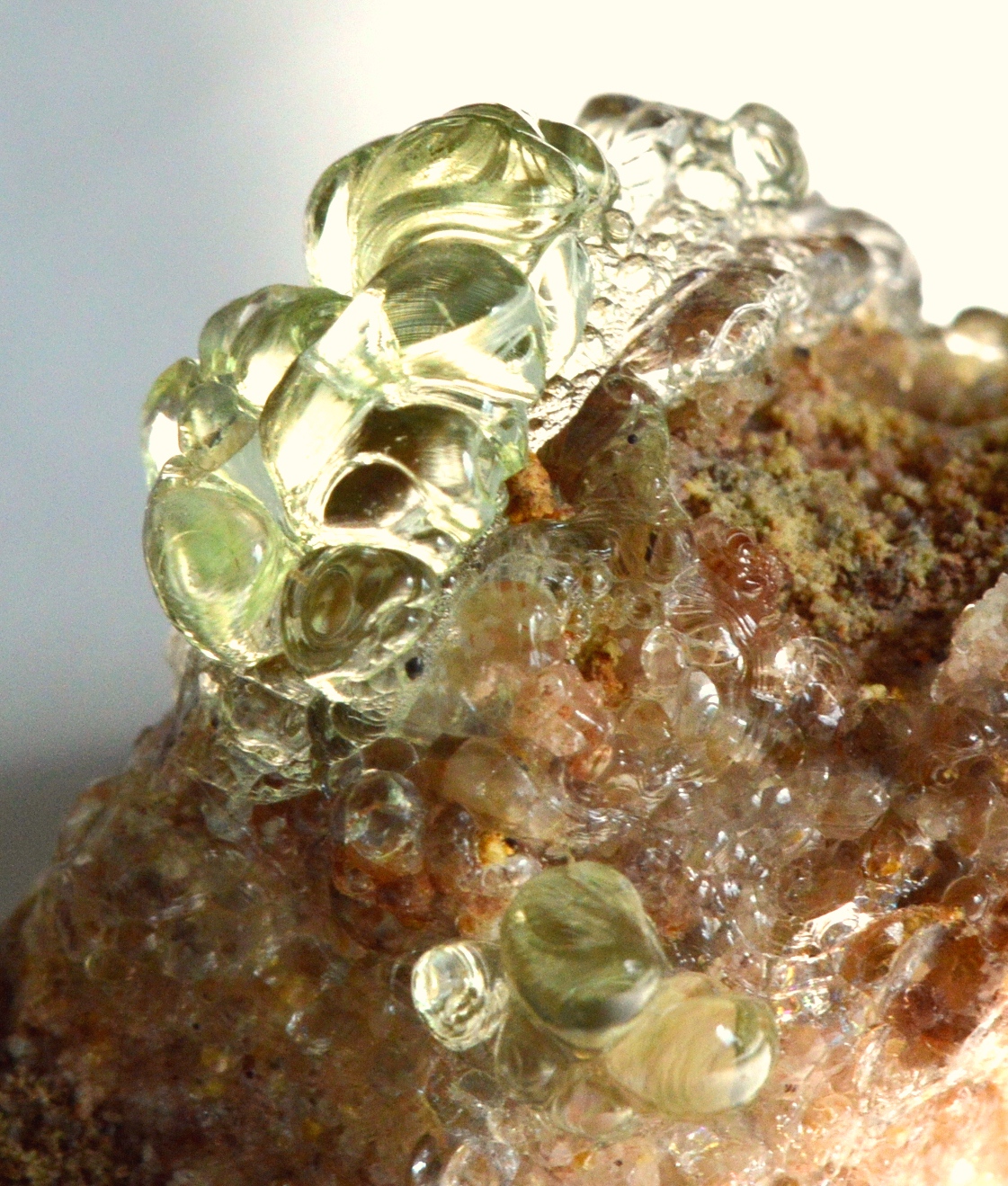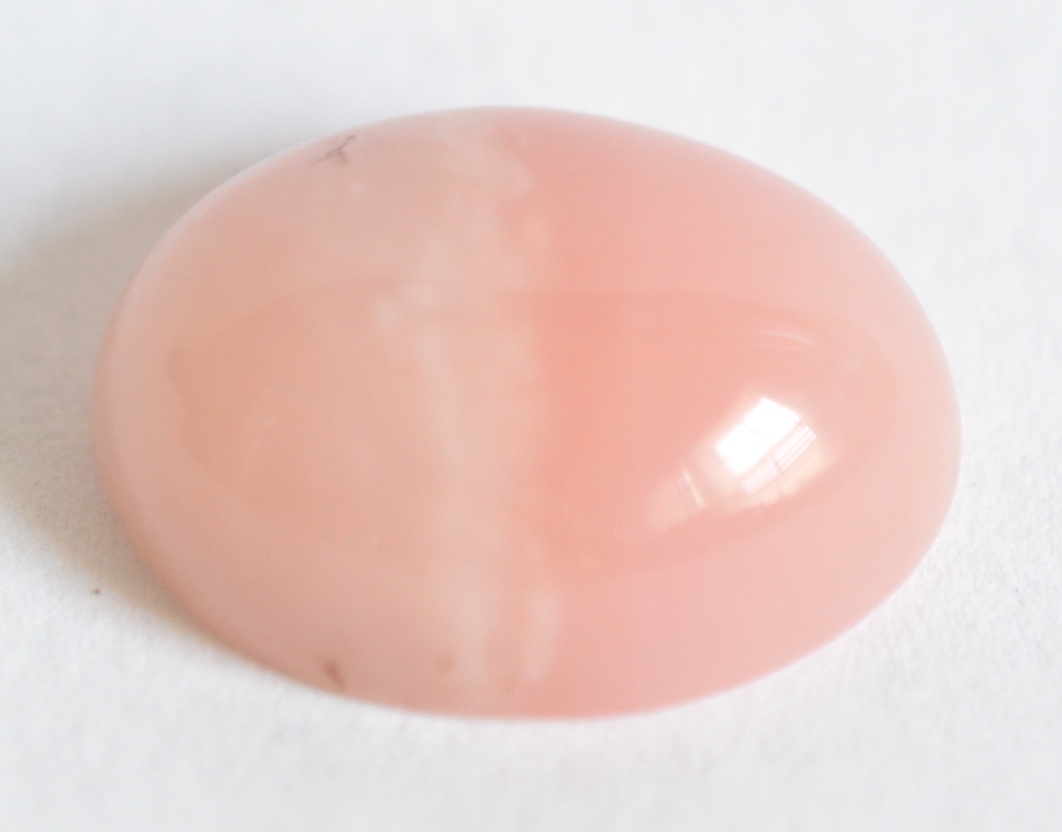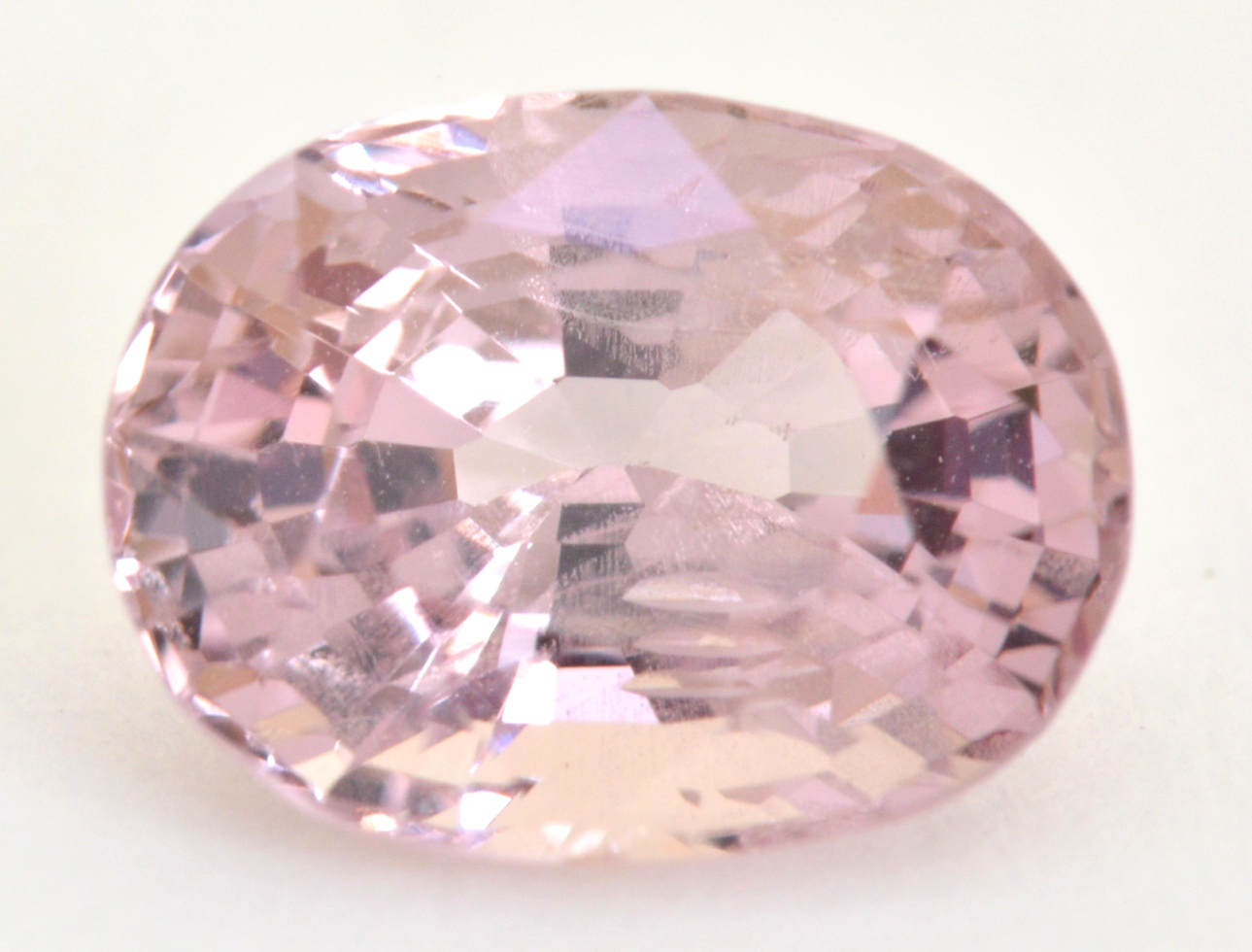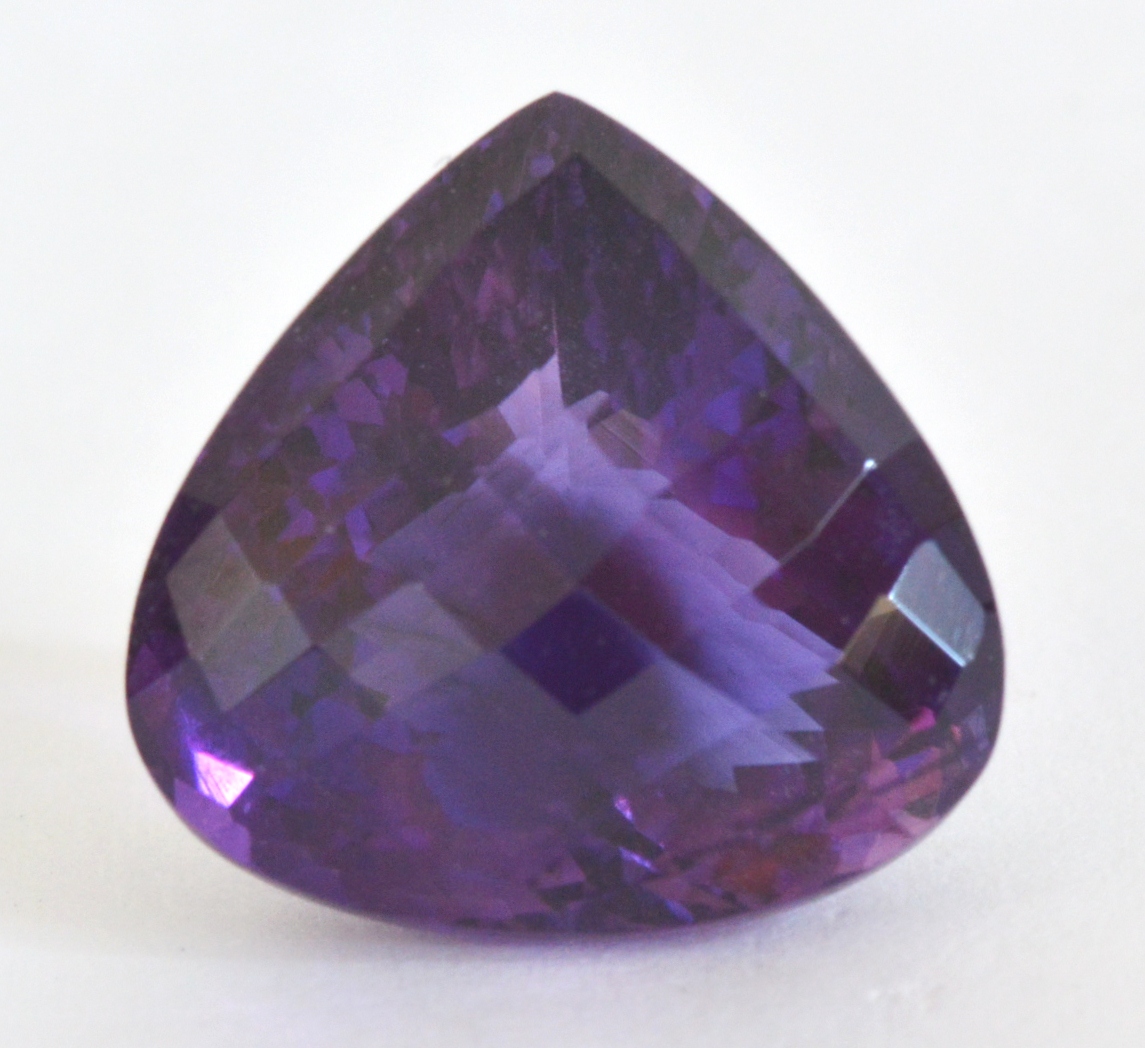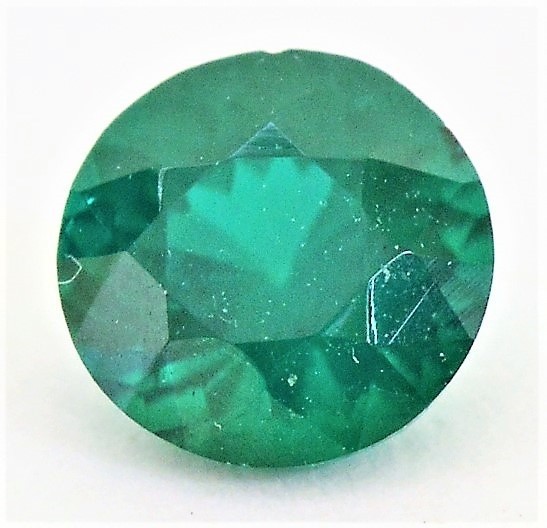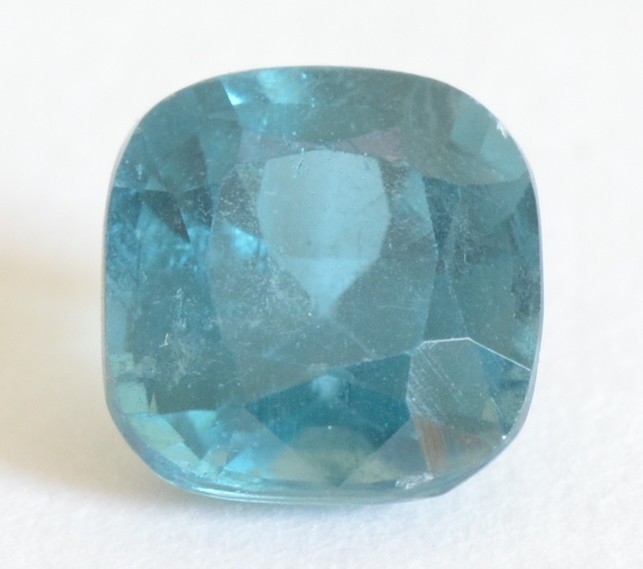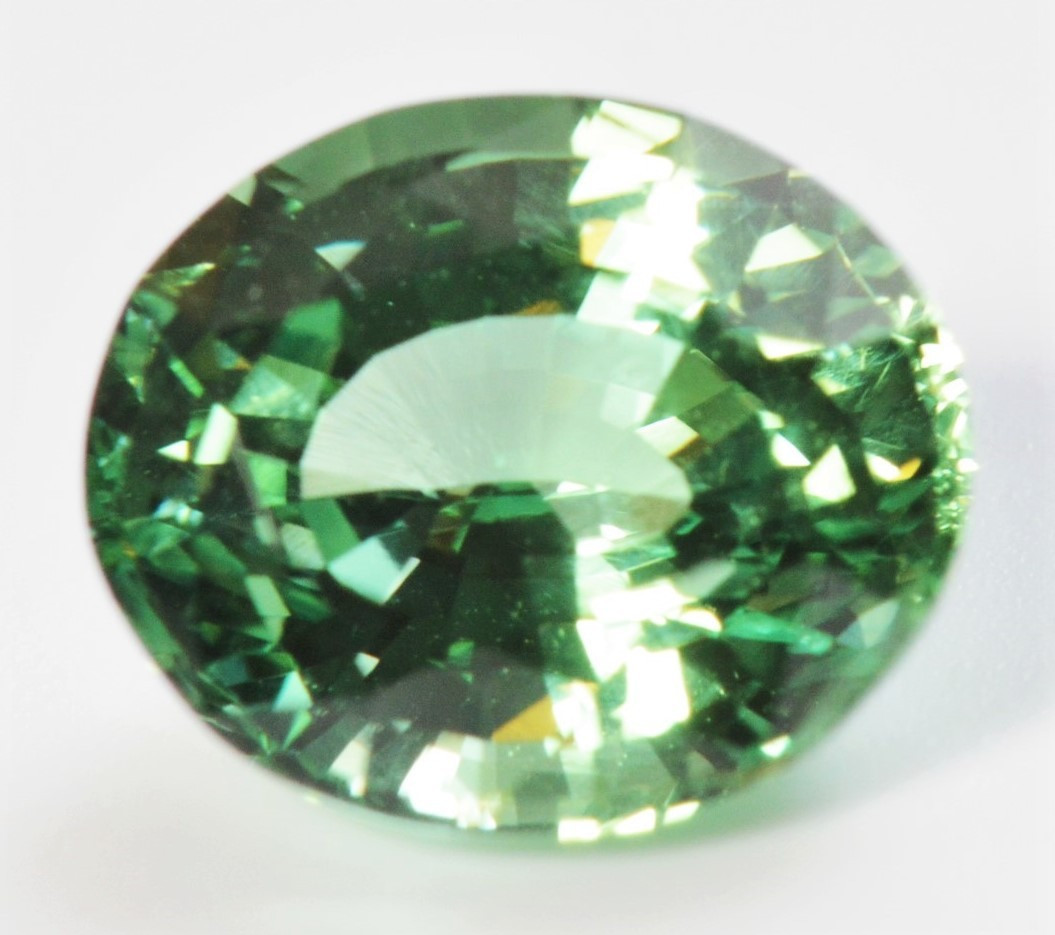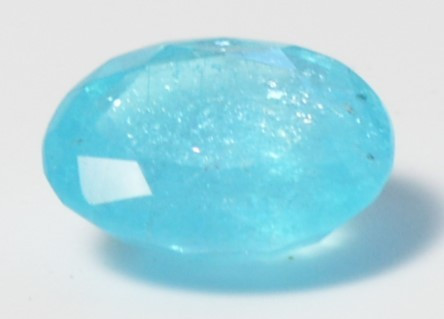Almandine Garnet
Spessartine Garnet
Larimar
Turquoise
Ruby
Chrome Diopside
Chrysoprase
Synthetic Spinel (flame-fusion)
Merelani Garnet
Colored Primarily by Vanadium
Sapphire
Pink CZ
© Kirk Feral 2009-present, All Rights Reserved. These materials may be duplicated for educational purposes only. No part of this website may be duplicated or distributed for profit, for commercial purposes, or for posting to another website without the expressed written consent of the copyright holder.
Rare Earth Metals: Rare earth ions in gems range from weakly paramagnetic to intensely paramagnetic. Rare earth metals are most notably found as dopants (artificial coloring agents) in lab-created gems such as Gadolinium Gallium Garnet (GGG), Yttrium Aluminum Garnet (YAG), Cubic Zirconia (CZ) and Glass gems. GGG is made of the highly magnetic rare earth metal Gadolinium (Gd). Various metals have been added to GGG to create different colors in an attempt to simulate colored Diamonds and other colored stones. The blue-green GGG pictured below (left) is colored by cobalt, but even colorless GGG is picked up by a magnet due to Gadolinium. GGG is no longer manufactured for gemstone purposes, and YAG gems are in very limited production.
Today, CZ is the leading Diamond simulant. Pink CZ (below center) is strongly magnetic because it contains magnetic oxides of erbium (Er) and holmium (Ho), the most strongly paramagnetic of all metal ions. Erbium oxides can be 10 times as paramagnetic magnetic as iron oxides, and can be detected with a magnetic wand in trace amounts perhaps as low as 0.01%. Cubic Zirconia can be colored yellow by cerium and neodymium (below right) to imitate yellow Diamond. Cerium ions are barely paramagnetic.
7) Nickel (Ni) is ferromagnetic (intensely magnetic) as a native metal, and is found in conjunction with iron in iron-nickel meteorites. Nickel ions (Ni2+) dispersed in gemstones are only weakly paramagnetic compared to iron, but when in high concentrations they can cause strong magnetic responses. We know of only 3 natural gems that are colored primarily by nickel. These are Chrysoprase, Prase Opal, and Gaspeite. Chrysoprase is a type of Chalcedony Quartz, and Prase Opal is a rare Opal colored by sub-microscopic inclusions of Chrysoprase. Gaspeite is a rare idiochromatic gem mineral containing nickel and iron. All 3 gems are green in color, and all are mined predominantly in Australia. These gems show weak to strong magnetic attraction due to varying concentrations of nickel (plus iron in Gaspeite). Nickel in conjunction with iron and chromium can contribute to green color in minerals of the Serpentine group: Serpentine, Lizardite, Bowenite, Willemseite, etc. These are weakly to strongly magnetic.
6) Copper (Cu) is a strong coloring agent that is occasionally found in gems, creating mostly blue and green color. Copper is inert (diamagnetic) as a native metal, as can be demonstrated when we apply a magnet to a household copper pipe fitting. Also diamagnetic is the red gemstone Cuprite, which is itself a copper oxide (Cu2O) colored by monovalent ions of cuprous copper (Cu1+).
However, copper can also cause gemstones to be paramagnetic. With a change in the valence state, divalent Cu2+ (cupric copper) in relatively high concentrations within idiochromatic minerals can create significant magnetic attraction. Such copper ions are found in copper salts and copper silicates rather than in copper oxides. As an example, the lab-grown copper (II) sulfate crystals (CuSO4) pictured below show weak to moderate magnetic attraction to an N52 magnet.
The Magnetic Metals that Color Gems
This page presents a detailed tour of the 8 transition metals, as well as the rare earth metals and uranium, that cause color in gems. These metals exist as ions (charged atoms), specifically as cations (ions with a positive + charge), that are dissolved within the chemistry of the gem, and two or more of these metals can at times be dispersed within a single gem. In allochromatic gems, the metals exist as impurities, but in idiochromatic gems, metal ions area part of the gem's inherent chemistry. The varying degrees of magnetic attraction caused by these metals depends on their concentrations and valence states.
You can find the causes of color for over 350 gems listed in our Magnetic Susceptibility Index in the far right column of the index.
The next few pages of this section explore how spectroscopy and fluorescence are related to magnetism in gemstones, and how the magnetism of any gem can be quantitatively measured.
Near-Colorless Peridot (Forsterite)
with Green Tint
Near-Colorless Spinel (Pink Tint)
2) Manganese (Mn) is the third most common transition metal on earth after iron and titanium, and it is fairly common in gemstones. As a pure metal in its ground state, it is far less magnetic than pure iron. However, manganese ions (Mn2+) in gems have high magnetic susceptibilities, and manganese oxide (MnO) concentrations as low as approximately 0.13% are detectable. Due to a high concentration of Mn2+ (up to 40% MnO) in Spessartine Garnet, this is the most strongly magnetic species of Garnet. Almandine Garnet colored by iron (Fe2+) and Andradite Garnet colored by iron (Fe3+) are tied for second place after Spessartine.
Manganese II ions (Mn2+) create orange color in Spessartine, and red and pink body color in many gems such as Rhodochrosite (mostly translucent to opaque), which at times is even more magnetic than Spessartine Garnet. Manganese III (Mn3+) ions create color in much lower concentrations than Mn2+, resulting in weakly magnetic or diamagnetic gems. Mn3+ creates red color in Rubellite Tourmaline, which is usually weakly magnetic, and pink color in Kunzite (pink Spodumene), which is diamagnetic. A form of black manganese oxide called Psilomelane is strongly magnetic due to Mn4+, and Psilomelane is sometimes fashioned into decorative opaque cabochons.
Iolite
Rubellite Tourmaline
Dravite Tourmaline
5) Cobalt (Co) is not a naturally abundant metal in the Earth's crust. Like iron and nickel, it is ferromagnetic (intensely magnetic) in its non-ionic ground state. Cobalt ions (Co2+) in cobalt oxide (Co3O4) are as strongly paramagnetic as iron ions, but they are rarely found in natural gems, and only in trace amounts. Cobalt is an even stronger chromophore than chromium, able to create color in extremely low concentrations, as low as a few parts per million. The trace amounts found in natural gems are almost certainly undetectable with a magnet.
We most often encounter cobalt in synthetic and imitation gems such as synthetic blue Spinel, synthetic blue Quartz, and blue Glass, all of which are generally diamagnetic. Flux-grown synthetic blue Spinel and synthetic blue YAG can be weakly magnetic, probably due to higher concentrations of cobalt, and these may be the only examples of magnetically detectable cobalt in gemstones. The concentrations of cobalt found in most natural and synthetic gems is too low to be detectable with a magnet.
Natural blue Spinels are colored by cobalt (Co2+), with blue color modified by iron. The magnetic responses we see in natural blue Spinels are probably due to entirely to iron. The rare Cobalt Spinel has low iron, and probably contains the highest levels of cobalt of any natural gemstone. Still, its weak magnetic attraction is likely due to iron rather than cobalt. Three other examples of cobalt contributing to color in natural gemstones are the rare green Sphalerite (diamagnetic), pink Cobalto Calcite (weakly magnetic due to iron), and pink Smithsonite (weakly magnetic due to manganese).
Prase Opal
Green Sphalerite
3) Chromium (Cr) is the second most common metallic chromophore found in gems after iron, causing red and green colors. Chromium is the reason Rubies are bright red and some Emeralds are rich green. Chromium is also a primary cause of UV fluorescence (pink or red fluorescence) in gemstones. Chromium ions (mostly Cr3+) exist within chromium oxides (Cr2O3) in gemstones. When we apply an N52 magnet to chromium (III) oxide powder, the particles are picked up by the magnet.
Yellow Sphene
Psilomelane
One Metal, Multiple Colors? As we have shown, a single metal type can cause different colors in different gems. Manganese ions cause orange color in Spessartine Garnet, red in Rubellite Tourmaline, black in Psilomelane, and in rare cases green in Andalusite. Such remarkable variation is a result of: 1) different valence states of the metallic ions 2) differences in geometry of the molecules containing the metal ions, and 3) different atoms that surround the metal ions. For example, the valence states of manganese ions (Mn2+, Mn3+, Mn4+) can vary among gem species. The shapes of the molecular sites (octahedral, tetrahedral, distorted cubic) occupied by these metal ions can also vary from species to species. And the types of neighboring atoms interacting with the metal ions can vary. More detailed explanations about the complex causes of color in gems can be found in Dr. Kurt Nassau's 1980 Scientific American article The Causes of Color, the Gems and Gemology 1987 article An Update on Color in Gems by Fritsch and Rossman, and at Dr. George Rossman's CalTech web page The Colors of Minerals.
Emerald
Gaspeite
Kyanite
Azurite & Malachite Cabochon
Cobalto Calcite
Reddish Brown Bastnaesite
Some allochromatic gem species mix in solid solution with idiochromatic species that have natural coloring agents in their chemical structure. As examples, Forsterite mixes with green Fayalite to create a hybrid called Peridot (Drag response), orange Hessonite Grossular Garnet (Moderate to Drag response) mixes to a small degree with Andradite Garnet, and brown Enstatite (Drag response) mixes with brown/black Ferrosilite. These blended allochromatic-idiochromatic gems can retain enough magnetic metals to show some attraction to a magnet even when they are near their pure state (colorless or near-colorless).
The near-colorless Forsterite shown below on the left has a slight green tint and shows weak magnetic attraction due to iron from Fayalite. The near-colorless Hessonite Garnet in the center has a slight orange tint and shows moderate magnetic attraction due to iron from Andradite. The completely colorless Enstatite on the right is weakly magnetic due to iron from Ferrosilite. As another example, colorless Magnesioaxinite is weakly magnetic due to iron from brown idiochromatic Ferroaxinite.
Colorless and Near-colorless Gemstones: All allochromatic gemstones are colorless in their pure state. As a rule, colorless and near-colorless gems of allochromatic species such as Sapphire and Spinel show no attraction to a magnet because they lack paramagnetic metals, or contain paramagnetic metals in concentrations too low to be detected with a magnet. The colorless Sapphire below (left) has undetectable iron content. The Spinel below (right) shows a slight pink tint, but it is also magnetically inert (diamagnetic) because the concentration of iron is very low. A few other examples of diamagnetic colorless allochromatic gems are Goshenite Beryl, Achroite Tourmaline and white Jadeite.
Peridot
In natural gems, rare earth metals are seldom found as the primary coloring agents. Neodymium and praseodymium usually occur together in natural gems that are yellow and brown in color, and may contribute to color. Yellow Sphene is weakly to strongly magnetic due to traces of neodymium (Nd3+), praseodymium (Pr3+) and iron (Fe3+). Green Sphene is additionally colored by chromium/vanadium, which contributes nothing to its weak magnetic attraction. Yellow Apatite and brown Apatite are weakly to strongly magnetic due to neodymium and praseodymium. This rare earth metal pair is also found in blue, green, and even colorless Apatite. It may affect color in these gems to some degree, but it rarely causes magnetic attraction in these colors.
Cerium ions (Ce4+) occur in high concentrations as part of the native chemistry of idiochromatic brown Bastnaesite and Parisite, but cerium is so weakly paramagnetic that it may contribute little or nothing to the strong magnetic responses of these rare gems. The high magnetic susceptibilities of Bastaensite and Parisite, as well as the brown colors, may be due to high concentrations of strongly paramagnetic neodymium (Nd3+) and praseodymium (Pr3+).
Blue-Green GGG
Metals Within Microscopic Inclusions: Microscopic and sub-microscopic inclusions of colorful minerals occasionally act as pigments when they are abundant and distributed throughout a gemstone. The collective micro-magnetism of these extremely fine particles can also result in magnetic attraction in gems that are not magnetic when pure. Such inclusions are primarily found in Opal, Quartz and Feldspar, and more often than not these gems are translucent rather than transparent. We have already seen examples of magnetic Chrysoprase (Chalcedony Quartz) and Prase Opal, where magnetic nickel ions cause green color. In Chrysoprase, the nickel ions may occur within microscopic inclusions of Willemseite, a green nickel silicate mineral. Prase Opal is colored by microscopic inclusions of Chrysoprase.
A weakly magnetic green Opal with the trade name "Kiwi" Opal mined in Madagascar is likely colored by sub-microscopic inclusions of compounds containing iron and/or manganese. Macro-crystalline Quartz is occasionally colored by microscopic inclusions, as seen in "Sunset" Quartz. It is the needle-like inclusions of iron oxide (possibly Limonite) that impart orange color to "Sunset" Quartz, which is diamagnetic. In Feldspar, microscopic inclusions of magnetite in the gray body of spectral Labradorite (Feldspar) can induce magnetic attraction. In Oregon Sunstone (Labradorite Feldspar), microscopic particles of copper are the cause of red color and schiller, but the valence state (Cu1+) is not paramagnetic. The weak magnetic attraction shown by Oregon Sunstone is probably due to a small amount of cryptic iron.
Fire Opal (Brazil)
Chrysocolla Chalcedony
(Arizona)
Blue Smithsonite
(Mexico)
Sub-microscopic inclusions of iron oxides such as Hematite or iron oxide-hydroxides such as Lepidocrocite and Goethite cause yellow, orange, and red colors in Agate and Chalcedony (such as Carnelian) and in Opal (such as Fire Opal). Solid suspensions of very fine particle inclusions produce lighter and brighter orange/red colors, while larger particles within a gem results in darker brownish orange/red colors. These iron-bearing inclusions or particles are diamagnetic (inert) in Carnelian as well as in Fire Opals from Mexico and Madagascar, probably due to low concentrations of iron. Fire Opals from Oregon and Brazil typically show weak magnetic responses, evidently due to higher iron content and/or to iron oxide compounds with valence states different than those from Mexico and Madagascar.
"Kiwi "Opal
Colorless Sapphire
Yellow CZ
Yellow Smithsonite
Bumble Bee "Jasper"
Near-colorless Demantoid Garnet is rare, but this natural idiochromatic gemstone will actually show a Pick-up magnetic response due to paramagnetic ions of iron. No other near-colorless gems of natural origin show such strong magnetism. Among man-made gems, GGG (Gadolinium Gallium Garnet) is the only completely colorless gemstone material that shows a Pick-up response due to the strong paramagnetism of gadolinium. Colorless synthetic HPHT Diamonds are the only transparent gemstones, natural or synthetic, that can show a Pick-up response due ferromagnetism (caused by flux inclusions of elemental iron and nickel).
In contrast to most colorless or white gems, black natural gemstones often contain abundant iron and/or manganese, and opaque black gems commonly show very strong magnetic attraction.
1) Iron (Fe) is one of the most common elements in the earth's crust, and it is the most common transition metal that causes color in gemstones. As a solid metal, iron is in a non-ionic ground state, and it is ferromagnetic (intensely magnetic). Atoms of iron (ferrous Fe2+ ions or ferric Fe3+ ions) within oxides that are dispersed throughout a gem often cause color. These iron ions are not ferromagnetic, but they are strongly paramagnetic. Fe2+ ions are more paramagnetic than Fe3+ ions. We estimate that an N52 magnet can detect iron in gems in concentrations as low as 0.1% iron (II) oxide (FeO) by weight.
Aluminum (Al) is not one of the transition metals and does not by itself cause gem color as a dispersed metal ion. But as the most abundant metal in the Earth’s crust, surpassing iron, aluminum warrants mention here. Although aluminum is weakly paramagnetic in its pure metal state, aluminum ions (Al3+) within gems have no unpaired electrons and are therefore diamagnetic. This lightweight metal is frequently found as part of the chemical formulas of natural gemstones. Aluminum oxide gems include Sapphire, Ruby, Spinel, Feldspar, and others. Aluminum silicate gems include Emerald, Garnet, Jade, Spodumene and others. Aluminum is also used in the production of many synthetic gems such as Yttrium Aluminum Garnet.
Pyrope Garnet, Aluminum
Silicate Colored by Chromium & Iron
Green Synthetic YAG, Aluminum
Oxide Colored by Chromium
Smoky Quartz
Dispersed iron ions within oxides create red body color in gems such as Almandine Garnet, blue color as seen Aquamarine Beryl, and green color as seen in Peridot.
In a rare case of aluminum being involved in the production of gem color, aluminum can occur in Quartz as an impurity found in color centers. Radiation, whether natural or lab-created, can produce color centers in Quartz crystals, resulting in brown color in Smoky Quartz and also partly to yellow color in natural Citrine. The yellow color of Citrine may also partly come from a charge transfer process involving iron (Fe3+). Smoky Quartz can be turned into Citrine through heating. Smoky Quartz and Citrines that derive their color from these color processes are diamagnetic (not attracted to a magnet).
However, most Citrines on the market today are made by heating purple Amethyst, which derives color from color centers and charge transfer processes that involve iron (Fe4+) rather than aluminum (Al3+). Heat changes the valence state of iron from Fe4+ to Fe3+, thereby changing the color from purple (Amethyst) to yellow (Citrine). These treated Citrines, and the Amethysts from which they are derived, are also diamagnetic.
Citrine (untreated)
Sulfur (S) is a non-metallic diamagnetic element that as a single element forms a crystalline mineral with yellow color. Sulfur is a semiconductor, and its color is the result of band gap, a complex optical phenomenon described in band theory and understood best by physicists and chemists.
Lapis Lazuli
Oregon Sunstone (Feldspar)
Blue Amazonite
Pink Opal
Copper ions within sub-microscopic inclusions of the mineral Chrysocolla create blue and green colors in Opal, as seen in Peruvian Opal, and in Chalcedony Quartz, as we find in Chrysocolla Chalcedony ( a.k.a. Gem Silica) from Arizona and some other locations. The Chrysocolla inclusions in Gem Silica often result in significant magnetic attraction, but light blue translucent gems like the one shown below (left) are inert (diamagnetic) due to lower concentrations of Chrysocolla. Blue Smithsonite (zinc carbonate) is weakly magnetic due to copper. Published research suggests that the blue color is probably due to microscopic inclusions that contain copper (likely Chrysocolla) rather than to copper ions replacing zinc in the chemistry of Smithsonite. Chrome Chalcedony derives its green color from microscopic inclusions containing chromium oxides. Chrome Chalcedony is usually inert, but it is sometimes very weakly magnetic.
Fire Opals (Mexico)
Chrome Chalcedony
(Zimbabwe)
"Sunset" Quartz
Carnelian Chalcedony
Brown Apatite
Solid Chromium
Unpaired electrons: The degree of paramagnetic attraction shown by gemstones appears to be loosely related to the number of unpaired electrons of the metal ions. Terbium ions (Tb3+) have 6 unpaired electrons and gadolinium ions (Gd3+) have 7 unpaired electrons that are inclined to align with the magnetic field of a magnet. Terbium Gallium Garnet (TGG) has the highest magnetic susceptibility of any transparent gem, and Gadolinium Gallium Garnet (GGG) has the second highest magnetic susceptibility. It's interesting to note that terbium and gadolinium ions do not create color. Besides the 3 ferromagnetic transition metals- iron, nickel and cobalt- gadolinium is the only other metal that is also ferromagnetic at (or near) room temperature in its pure metal state.
Spessartine Garnet
Colored by
Manganese (Mn2+) & Iron (Fe2+)
Tsavorite Garnet
Colored by Chromium (Cr3+)
& Vanadium (V3+)
GGG
Colorless (Gd3+)
Picks Up with a Magnet
A rare example of solid metal copper inclusions occurring simultaneously along with dispersed copper ions within a single gem is shown below. This Chalcedony gem from Bolivia contains relatively large visible inclusions of native copper that reach the surface and have a coppery metallic sheen. The blue body color of the gem is derived from copper ions (Cu2+) in solid solution, probably within microscopic inclusions of Chrysocolla dispersed throughout the Chalcedony. The black inclusions are unidentified. As expected, this allochromatic gem is diamagnetic.
Native Copper and Ionic Copper
in Chalcedony
Near-colorless Hessonite Garnet
with Orange Tint
Cryptic Ions: Iron and manganese ions can be “cryptic”. We use the term "cryptic" to describe dispersed metal ions within a gem that are not visible to the eye as color even though they are detectable with a magnet (or with a spectrometer, or even with UV fluorescence). Manganese ions in the valence state of Mn2+, and iron ions as Fe3+, are weak chromophores compared to most other transition metal ions. In some gems, these Mn2+ and Fe3+ ions may not produce any visible color except when in high concentrations. Most or all of the color in a gem containing relatively low concentrations of Fe3+ and Mn2+ may be due to other metal ions within the gem, and/or to charge transfer processes involving Mn2+ or Fe3+.
It follows that natural gems that are magnetic and colored primarily by chromium must additionally contain naturally-occurring impurities of iron or manganese ions that are cryptic, a term the author uses when the concentration of iron or manganese is sufficient to cause magnetic attraction, but the iron or manganese contributes nothing to color. However, cryptic iron may modify the color tone of a gem toward a darker appearance, as we find in dark Rubies from Thailand.
Cryptic iron ions may be responsible for most or all of the magnetic attraction seen in green gems colored primarily by chromium such as Chrome Diopside, Chrome Demantoid Garnet and some Emeralds (inert to moderately magnetic). Chrome Chalcedony (colored green by trace amounts of chromium oxide) typically contains no detectable iron and is usually inert (diamagnetic). But Chrome Diopside is weakly to strongly magnetic. Why the difference? Chrome Diopside contains a magnetically detectable amount of iron.
Uvarovite Garnet Druse (Russia)
Man-made gems such as synthetic Emerald, synthetic Ruby, and synthetic red Spinel are some of the few transparent faceted gems that contain enough chromium to be definitively detectable with a magnet (an estimated minimum of 0.4% chromium oxide by weight). Most of these gems are weakly magnetic, at the lower limit of detectability, but some synthetic Emeralds and high-chromium natural Emeralds can be strongly magnetic due to chromium.
Among natural gem minerals colored by chromium, Emeralds, Rubies and some red Spinels with strong color saturation may contain enough chromium (> 0.4%) to partly contribute to the weak or moderate magnetic responses caused by a combination of iron and chromium. Chromium content within some Garnets, especially Chrome Pyrope, may also contribute in a small way to the total magnetic susceptibility. Green Chrome Chalcedony and occasionally Chrome Tourmaline can show faint magnetic attraction that may due entirely to chromium and vanadium.
Small green crystals of idiochromatic Uvarovite Garnet (an opaque Chromium Garnet) can contain 10-100 times more chromium than Emerald. Uvarovite Garnet crystals and crystals of Chromium-dravite Tourmaline are the only natural gem crystals that have high magnetic susceptibility due to chromium. Druse crystals of Uvarovite show a Pick-up response to an N52 magnet, and Uvarovite crystals over 1 carat show a Drag response.
Chrome Chalcedony
Diamagnetic Coloring Agents: In addition to transition metals and rare earth metals that are paramagnetic, various elements and compounds that are diamagnetic can also contribute to color in minerals and gems by interacting in color processes such as pigmentation, color centers, charge transfer and band gap. Some examples of these diamagnetic coloring agents are described below.
Diamagnetic Elements: In the Feldspar variety called Amazonite, metal ions of lead (Pb) are involved in color centers that give rise to green and blue color. Lead involved in the production of color is quite unusual. Lead is not a transition metal, and it is diamagnetic. Color in yellow and blue diamonds is related to impurities of nitrogen and boron respectively, both diamagnetic non-metals. Fluorine is a diamagnetic non-metal that is involved in color centers (a.k.a. "F centers" or Frenkel defects) that produce purple color in Fluorite due to fluorine ions that have gone missing from their normal positions in the crystal structure at the atomic level.
Uranium (U4+) is a radioactive metal present in low (non-harmful) concentrations in natural Zircons of all colors. When certain colorless Zircons contain enough uranium dioxide (UO2), they turn blue when heated at high temperatures. The highest concentrations of uranium are found in green Zircons, with uranium being responsible for the green color. These Zircons are metamict, meaning their crystal structure has been completely degraded over time by uranium. Zircons of other colors owe their colors primarily to color centers rather than directly to uranium. Although uranium is a significantly paramagnetic metal, uranium ions in Zircon are rarely detectable with a magnet because of their low concentrations. On rare occasion, the concentration of uranium dioxide can be high enough (>0.3%) in green metamict Zircon to create weak magnetic attraction (see photo below right).
Heated Blue Zircon (Inert)
Green Metamict Zircon (Weak, rare)
Trace amounts of uranium dioxide are also known to be responsible for green fluorescence in some Opals such as opaque white Common Opal from Virgin Valley, Nevada (which fluoresces green in ultraviolet light), and transparent globular Hyalite Opal from Zacatecas, Mexico (which fluoresces bright green in ultraviolet light, and some examples even fluoresce pale green in daylight). Traces of uranium may also cause green phosphorescence in Australian Opals. Uranium has also been used to manufacture fluorescent green Glass gems and decorative green "Uranium Glass" objects. The two Uranium Opal mineral specimens shown below are diamagnetic.
Common Opal Rough, Virgin Valley, Nevada
Ultraviolet Light Fluorescence
Hayalite Opal Specimen, Zacateca, Mexico
Daylight Fluorescence
Pink Spinel, Aluminum
Oxide Colored by Chromium
8) Titanium (Ti) by itself does not cause color or magnetic response in natural gemstones. As a solid metal, titanium is weakly magnetic. But titanium primarily appears in gemstones as ions (Ti4+), which are only barely paramagnetic, and not detectable with a magnet in natural stones. Even synthetic colorless Rutile, composed entirely of titanium and oxygen ions, is diamagnetic or very weakly magnetic.
Titanium is important to color in gemstones because the interaction between small amounts of titanium ions and iron ions creates strong color in a number of gems through a process called intervalence charge transfer. This chemical process involving electron charge transfers from Fe2+ to Ti4+, as well as from Fe2+ to Fe3+, results in the rich blue hues of Sapphire (inert to moderately magnetic) and blue Kyanite (inert). The process of Fe2+ to Ti4+ charge transfer also induces dark brown color in Dravite Tourmaline (inert). Manganese (Mn2+) to titanium (Ti4+) charge transfer contributes to yellow color in some Tourmalines (inert to drag response). Any magnetic attraction detected in gems containing titanium is due to the presence of iron and/or manganese, not to titanium or to charge transfer processes involving titanium.
Amethyst
In a few cases, copper ions (Cu2+) within copper (II) oxide (CuO) also impart blue color to allochromatic gems such as rare Paraiba Tourmaline and rare blue Vesuvianite, both transparent gemstones colored by trace impurities of copper. But the low concentrations of copper in these allochromatic gems results in magnetic susceptibility that is too low to be detected with a magnetic wand. An opaque gemstone colored by copper ions (Cu2+) within copper (II) oxide is Larimar, a light blue variety of the mineral Pectolite mined in the Dominican Republic. Copper ions in these allochromatic cabochon gems are again in concentrations too low to be detected. The Larimar cab shown below (right) is inert (diamagnetic).
Dioptase
Paraiba Tourmaline
Iron ions involved in charge transfer processes are responsible for blue color as seen in Iolite, green color as seen in green "Verdelite" Tourmaline, and brown color as seen in Dravite Tourmaline. Iron also induces yellow and black colors in other gems.
Aquamarine
Verdelite Tourmaline
Dravite Tourmaline
4) Vanadium (V) is usually paired with chromium in allochromatic green gems. It has the same magnetic susceptibility as chromium, can create exactly the same green colors as chromium, and often is the primary component of the pair. Gem color created by vanadium can range from dark green to light green depending on the concentration of vanadium.
Vanadium can be the primary cause of color in many green gems such as Emerald and Tsavorite Garnet. A number of green gems that have the word "chrome" in the trade name are actually colored primarily by vanadium. Examples include Chrome Sphene, Chrome Tourmaline and Chrome Kornerupine. Our own comparisons of UV fluorescence, Chelsea filter reactions and absorption spectra indicate that vanadium (V3+) rather than chromium (Cr3+) is the dominant coloring agent in these gems. Like chromium oxide, vanadium oxide is not magnetically detectable in concentrations less than approximately 0.4% by weight.
"Chrome" Tourmaline
Colored Primarily by Vanadium
"Chrome" Kornerupine
Colored Primarily by Vanadium
Cobalt is sometimes used in gem treatments to enhance blue color. Cobalt glass is now being used to fill cracks in low-grade colorless and blue Sapphire, creating vibrant blue color in Sapphire gems that would otherwise not be of gem quality. Cobalt is also used in surface diffusion of blue Sapphire, and recently in deep diffusion of blue Spinel. It is very unlikely that any of these treatments contribute to detectable magnetic susceptibility.
Chromium is sometimes found as a secondary coloring agent in gems that are colored primarily by a different metal. This chromium may also be present without contributing to color at all. As an example, blue Sapphire often contains a trace of chromium which is not detectable as color or magnetism, but which does cause red or pink fluorescence under longwave UV light.
Synthetic Emerald
Colored Primarily by Vanadium
As with chromium, vanadium ions are usually found in low concentrations in natural gemstones, and gems colored primarily by vanadium are usually diamagnetic (inert). When magnetic attraction is encountered, most or all of the attraction may be due to the presence of cryptic iron (Fe3+). The only natural gemstone we have encountered that is strongly magnetic due to vanadium is a rare example of transparent Vanadium-dravite Tourmaline.
Among man-made gems, lab emeralds such as the synthetic Emerald colored by vanadium pictured above (right) can show faint magnetic attraction due to a modest level of vanadium. We have also measured strong magnetic susceptibility in Cubic Zirconia colored by a high concentration of vanadium.
The green colors associated with vanadium are sometimes slightly bluish in hue, resulting in interesting green colors, as seen in "mint" green Merelani Grossular Garnet, blue-green Vanadium Chrysoberyl and blue-green synthetic Emerald. But gemstones colored mostly by chromium can also at times show similar blue-green color. Bluish color in natural Emerald is the result of iron (Fe2+).
Vanadium can also cause blue color in a few gems such as Cavansite, Tanzanite (Zoisite), Axinite, blue Kornerupine and even Corundum. Trace amounts of trivalent vanadium (V3+) has been shown to contribute a blue color component in Corundum and in Axinite. Tetravalent vanadium (V4+) is known to be responsible for the blue color in Cavansite. The valence states and/or color mechanisms involving vanadium in blue Zoisite and blue Kornerupine are not well understood. Tanzanite is diamagnetic. The weak magnetic responses found in blue Kornerupine and the moderate magnetic responses in Cavansite are almost certainly due to metals other than vanadium.
Blue Kornerupine
Tanzanite
In other rare instances, chromium is present in blue gemstones. The blue-green color of Aquaprase Chalcedony (diamagnetic) is due to chromium in combination with nickel, and the blue-green color of Chrome Kyanite (diamagnetic to weakly magnetic) is due to chromium in combination with iron and titanium. Both gems appear red under a Chelsea filter due to chromium.
Aquaprase Chalcedony (Africa)
Chrome Kyanite (India)
Tsavorite Grossular Garnet
Clored Primarily by Vanadium
Vanadium Chrysoberyl
Colored Primarily by Vanadium
Colorless Enstatite
Chromium (III) Oxide Powder
Even so, chromium oxides are only 25% as magnetic as iron oxides, and chromium oxide in gemstones is often not magnetically detectable, even with floatation. This is largely because chromium is also a strong coloring agent, much stronger than iron. The concentration of chromium needed to cause color can in some cases be nearly 100 times less than the concentration needed for iron to cause color (George Rossman, pers. comm., 2014). Therefore, chromium is usually found in very low concentrations. The small amount of chromium within most red and green gemstones is undetectable or only barely detectable with a magnetic wand.
Magnetic idiochromatic gemstones colored by copper include blue Turquoise (copper phosphate), blue Azurite (copper carbonate), green Malachite (copper carbonate), blue-green Chrysocolla (copper silicate), blue-green Dioptase (copper silicate) and blue Boleite (lead-silver-copper chloride), all of which show magnetic attraction from copper. Due to the high concentration of copper in its native chemistry, the faceted Dioptase gem shown below (right) shows a Drag response to a magnetic wand.
Copper Sulfate Crystals
Iron (III) Oxide Powder
Metal ions within gemstones do not exist as independent atoms, but bond with other atoms within gems, primarily oxygen atoms, to form various oxides such as iron (II) oxide (FeO containing Fe2+ ions) and iron (III) oxide (Fe2O3) containing Fe3+ ions). The metal oxides that act as coloring agents tend to be uniformly distributed within transparent and translucent cut gemstones. Pictured below is red iron (III) oxide powder (Fe2O3).
Among the transition metals found within natural gems, our magnetic wand detects: 1) mostly iron; 2) occasionally manganese; 3 & 4) seldom chromium and vanadium; 5) cobalt rarely, if ever; 6 & 7) copper and nickel only in some translucent and opaque gems; and 8) never titanium, which is not detectable with an N52 magnet. When we see natural gems responding strongly to a neodymium magnet, we are most often detecting iron ions, or occasionally manganese ions.
Organic Pigments: Yellow amber is diamagnetic, composed of "fossilized" tree resin that derives color from diamagnetic organic compounds such as hydrocarbons that act as pigments. Red coral is colored by carotene, an organic orange pigment that is diamagnetic. Pink opal is colored by microscopic inclusions of plant-derived organic compounds called quinones. Quinones are also used in dyes, and these pigments are diamagnetic, as is pink Opal.
Several semiconductor mineral compounds are rich in sulfur, with sulfur as part of their essential chemistry, and these minerals can show strong colors due to band gap. An example is Cinnabar, a mineral that appears orangey-red not due to impurities containing sulfur, but to the combination of sulfur and the toxic transition metal mercury (Hg) that creates the chemical structure of Cinnabar (mercury sulfide). Realgar (arsenic sulfide) and Proustite (silver arsenic sulfide) are two orangey-red semiconductor minerals containing sulfur and the toxic non-metal arsenic (As) as part of their chemical formulas. Arsenic is diamagnetic. All the examples of semiconductor minerals presented here are diamagnetic.
Cinnabar in Chalcedony (Myrickite)
Proustite
Lapis Lazuli is a gemstone aggregate whose color involves sulfur. It is composed of diamagnetic minerals such as Calcite and Lazurite, along with flecks of Pyrite (a weakly magnetic iron sulfide). In this case, the rich blue color of Lapis Lazuli is not the result of band gap, but to charge transfer between sulfur atoms within the Lazurite component of Lapis Lazuli. Like Lazurite, blue color in Sodalite, Hackmanite, Hauyne and probably Afghanite are all the result of charge transfer between sulfur atoms that exist as part of the essential chemistry of the minerals. Cabochons of Lapis Lazuli are diamagnetic, as are gems of Lazurite, Sodalite, Hackmanite, Hauyne and Afghanite.
Amber
Sodalite
Purple Fluorite
Sulfur Compounds: Sulfur can be involved in the production of color within mineral compounds that are themselves semiconductors that act as coloring agents. Yellow color in Smithsonite has been mistakenly attributed to the transition metal cadmium (Cd), but color is instead believed to be due to microscopic inclusions of the semiconductor compound cadmium sulfate (Greenockite mineral). Cadmium sulfate is a combination of two diamagnetic elements, sulfur and cadmium, and yellow color is the result of the band gap phenomenon produced by this sulfur compound. Yellow Smithsonite gems can show weak magnetic attraction, likely due to the presence of iron impurities.
Another example involving a sulfur compound is Bumble Bee “Jasper”, which is actually not Jasper (cryptocrystalline Quartz), but an aggregate composed primarily of Calcite along with volcanic minerals such as the arsenic sulfide Pararealgar, a semiconductor compound that is diamagnetic and exhibits band gap. Bumble Bee “Jasper” derives its bright orange and yellow colors from inclusions of Pararealgar, a compound consisting of sulfur combined with arsenic (As), a toxic non-metal. The strong magnetic attraction shown by some cabochons of Bumble Bee "Jasper" is not due to yellow arsenic sulfide, but to black swirls of Hematite (an iron oxide) and/or possibly black manganese oxide.
Red Coral
Solid Iron
Solid Manganese
We can speculate that green color in some gems colored by vanadium (V3+) such as Vanadium Chrysoberyl may possibly be modified to blue-green by the presence of some V4+ ions. An in-depth look at how chromium and vanadium affect color in gemstones can be found in a 2-part article that this author published in 2019 in the March and June issues of Gemmology Today magazine: Masters of Green: Chromium and Vanadium Part I and Masters of Green: Chromium and Vanadium Part 2.
Iron ions (Fe3+) and manganese ions (Mn2+) are paramagnetic and both have 5 unpaired electrons. As we have seen, these ions create color and are responsible for some of the strongest paramagnetic responses found in natural transparent gemstones such as Andradite Garnet and Spessartine Garnet.
In contrast, chromium ions (Cr3+) have only 3 unpaired electrons, and vanadium ions (V3+) have only 2 unpaired electrons. Chromium and vanadium ions are responsible for green color in gems such as Chrome Tourmaline, Emerald and Tsavorite Garnet. Because these ions have lower magnetic susceptibility and are found in low concentrations, they generally contribute little if anything to the magnetic attraction of the gems they color. Having only one unpaired electron, copper ions (Cu2+) in transparent gems such as Paraiba Tourmalines are magnetically undetectable. Titanium ions (Ti4+) have no unpaired electrons. Titanium is involved in color in many gems, but only through inter-valence charge transfer with other metal ions. Because they have no unpaired electrons, Ti4+ ions by themselves cannot cause color or magnetic attraction.
Solid Gadolinium
Mangetism in Gemstones
An Effective Tool and Method for Gem Identification
© Kirk Feral



